Let me now write the comprehensive content about 20 transitional interior design ideas.Based on my research, I now have a comprehensive understanding of current transitional interior design trends, techniques, and ideas for 2025. Let me create your requested content following all the detailed instructions.
Transitional interior design emerges as the perfect solution for homeowners who find themselves torn between classic elegance and contemporary functionality. This versatile style seamlessly blends traditional comfort with modern sophistication, creating spaces that feel both timeless and current. The approach celebrates natural light and maintains a relaxed atmosphere while incorporating smooth, blending details that result in warm yet modern interiors. What makes transitional design particularly appealing is its flexibility - you can mix masculine and feminine elements, combine modern curved furniture with ornate pieces, and even blend different finishes like rattan and lacquer. As we move through 2025, this balanced approach continues gaining popularity among homeowners seeking spaces that adapt to their evolving needs while maintaining sophisticated comfort.
1. Neutral Transitional Color Palettes for Timeless Appeal
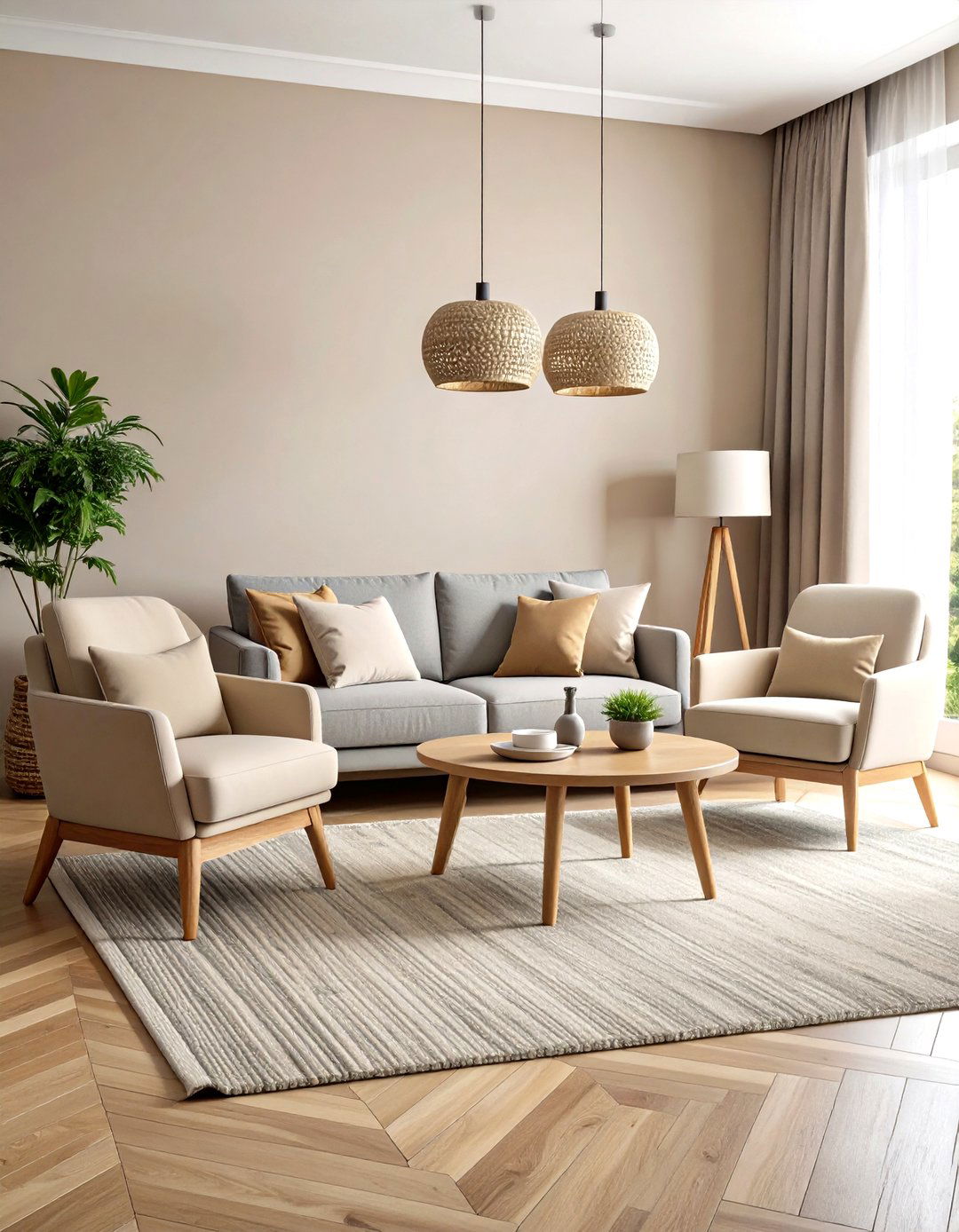
Transitional spaces achieve their serene atmosphere by relying on soothing, neutral hues like taupes, tans, and vanillas paired with deeper browns for visual depth. These calming foundations create the perfect backdrop for mixing traditional and contemporary elements without overwhelming the space. Consider layering different shades of cream, beige, and soft gray throughout your room to establish a cohesive flow. Transitional colors typically maintain a balanced mix of warm and cool undertones, creating harmonious transitions between spaces. The beauty of neutral transitional palettes lies in their ability to showcase both vintage family pieces and sleek modern furniture. By choosing these foundational colors, you create a canvas that allows textures, patterns, and architectural details to take center stage while maintaining sophisticated elegance.
2. Blending Traditional Furniture with Contemporary Transitional Lines
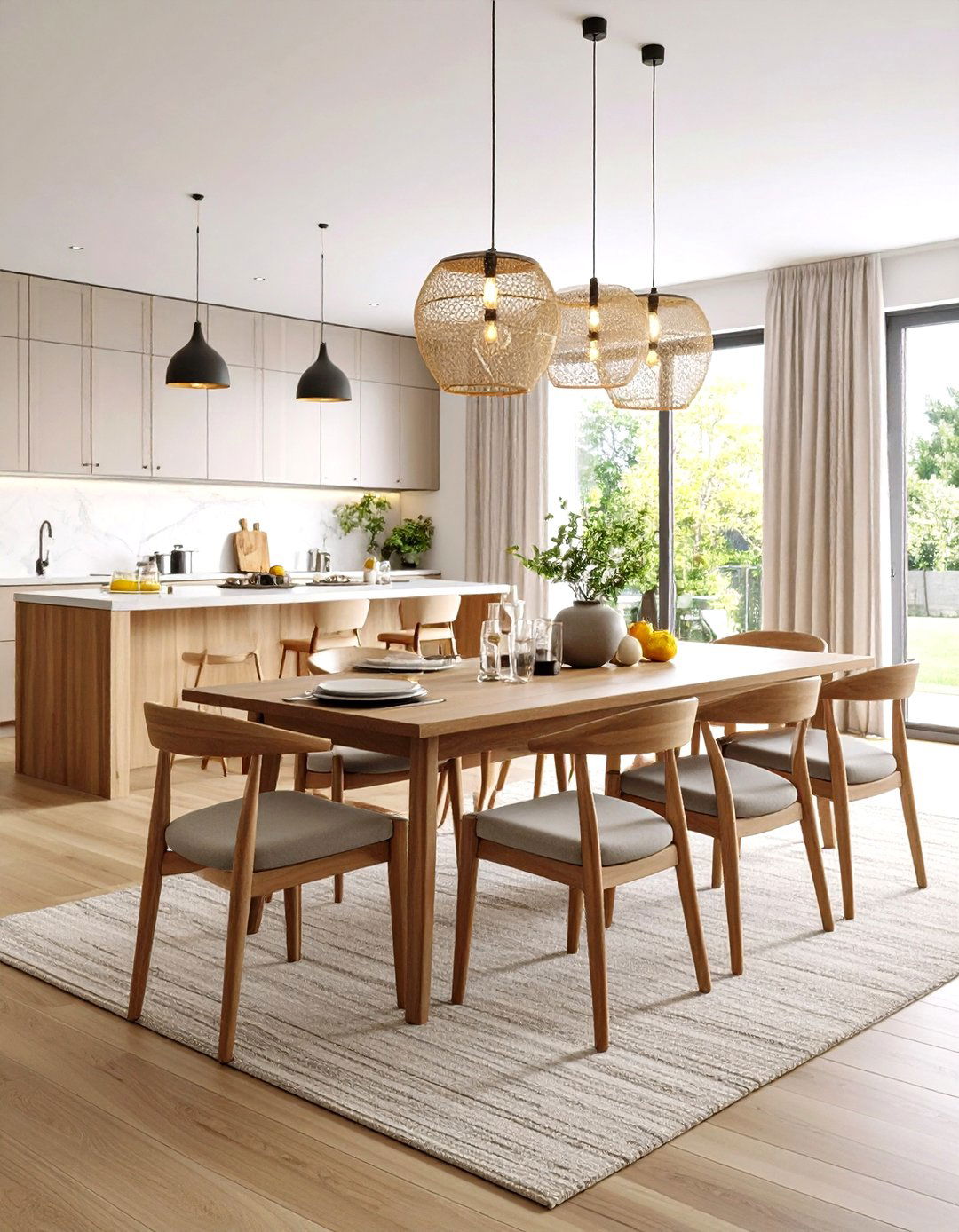
Classic furniture pieces such as armchairs, sofas, and dining tables create traditional feeling, while contemporary pieces like clean-lined sectionals and low-profile coffee tables add modern touches. Start by selecting one statement traditional piece, perhaps an antique wooden dining table, then balance it with streamlined modern chairs featuring simple silhouettes. Large furniture pieces from the traditional era receive makeovers to become more streamlined and sophisticated, matching the sleek status of emerging trends. The key lies in maintaining proportion and scale while mixing these different eras. For example, pair a classic Chesterfield sofa with a sleek glass coffee table, or position modern accent chairs around a traditional wooden desk. This thoughtful combination creates visual interest while preserving the comfort and functionality that defines transitional design.
3. Transitional Lighting Fixtures That Bridge Design Eras
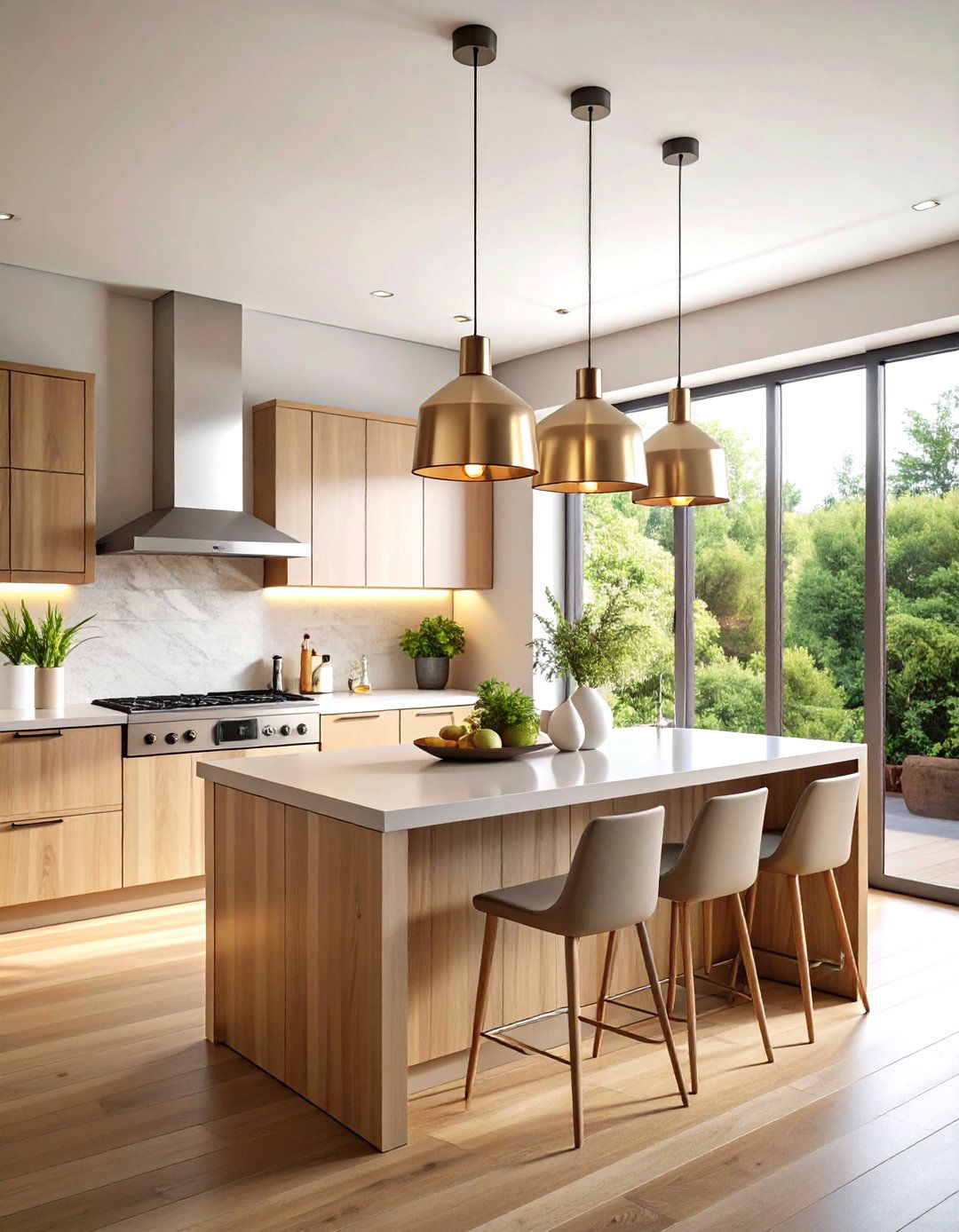
Transitional lighting incorporates traditional elements like wood, but fixtures usually feature neutral colors with straight lines and simple curves, creating simple yet sophisticated and minimalist yet practical designs. Consider installing pendant lights with clean geometric shapes in brushed metals over kitchen islands or dining areas. Good lighting plays a significant role in transitional interiors, so make it a feature by including alternative chandeliers beyond the expected dangling crystals. These fixtures beautifully balance elements of traditional and modern styles, creating aesthetics that feel both timeless and contemporary. Choose table lamps with linen or fabric shades paired with bronze or brass bases to complement your neutral color scheme. The goal is selecting lighting that feels neither too ornate nor too stark, achieving that perfect middle ground that defines transitional style.
4. Incorporating Natural Transitional Materials and Textures
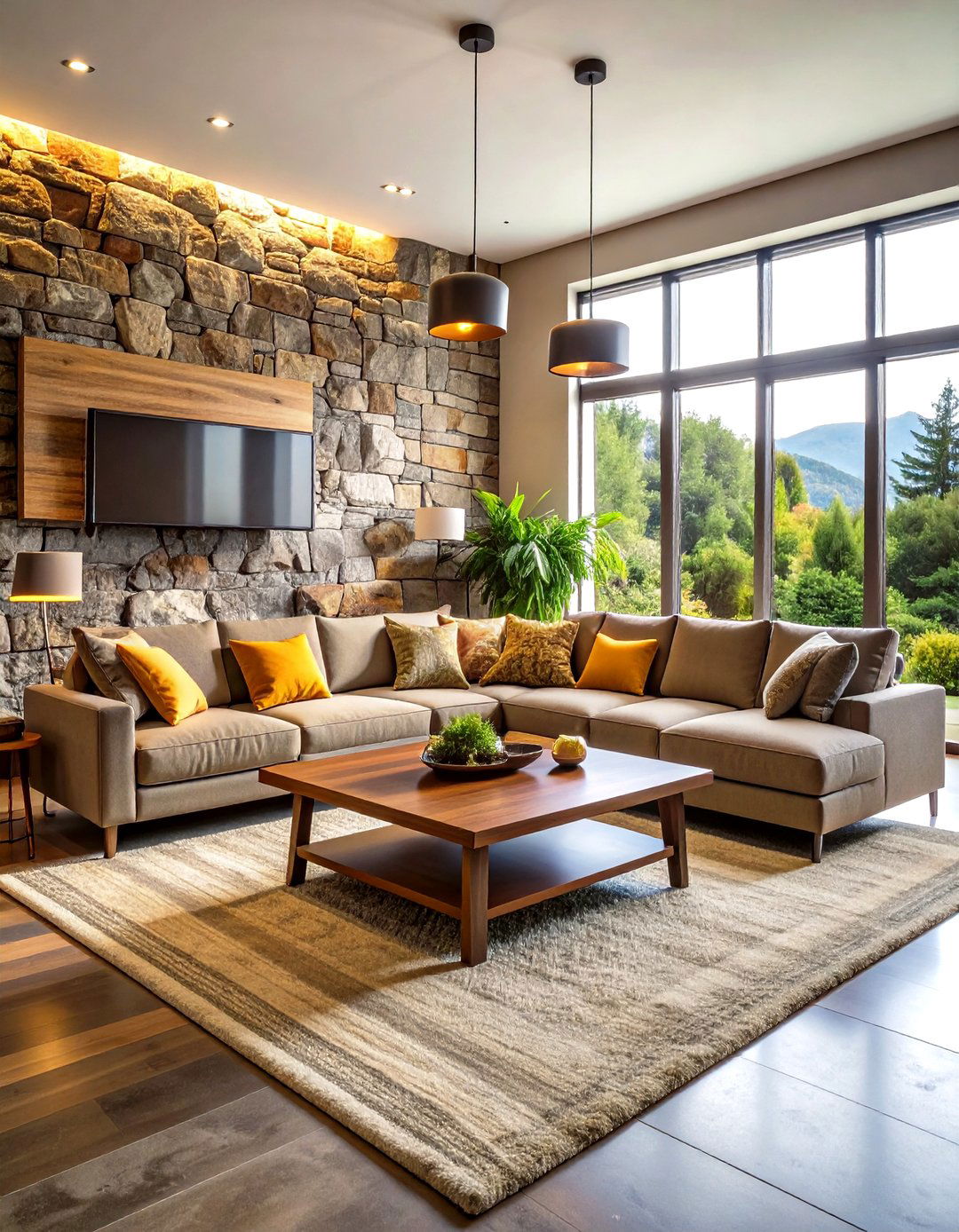
Transitional style favors organic textures such as wood, hides, stone, concrete, corduroy, and granite, with texture playing a crucial role in providing visual interest within muted color palettes. Layer different natural materials throughout your space to create depth and warmth without relying on bold colors. Consider granite or marble countertops paired with wooden cabinetry in kitchens, or stone accent walls combined with plush fabric seating in living areas. Fundamental materials like wood, plaster, metal, and stone help set the color palette while bringing intimacy, warmth, and history to spaces. Add textural elements through nubby chenille throws, corduroy cushions, or woven area rugs. These natural materials create visual interest while maintaining the sophisticated, understated aesthetic that makes transitional design so appealing and livable for everyday use.
5. Streamlined Transitional Window Treatments for Light Flow
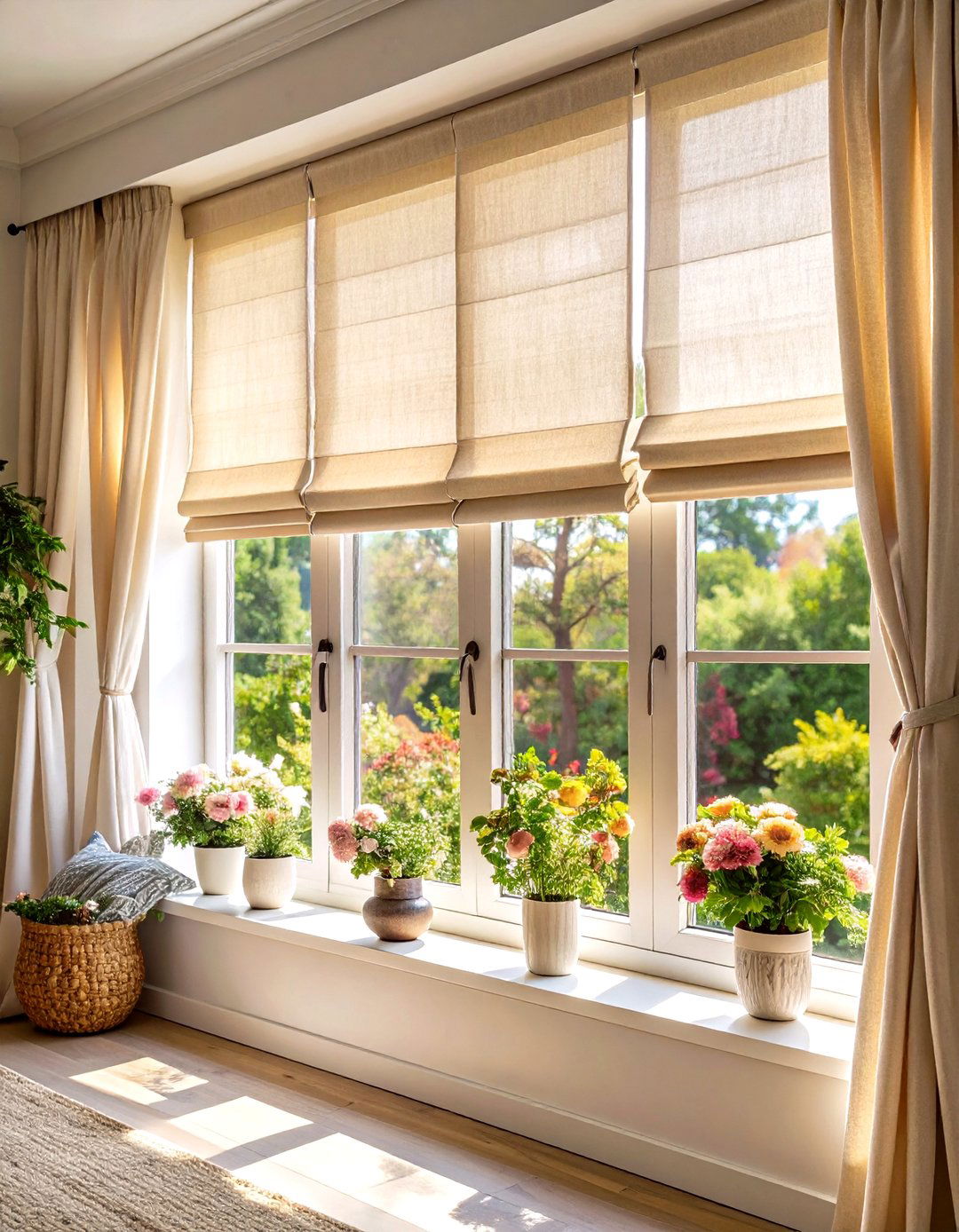
Natural light celebration stands at the heart of transitional design, making window treatment selection crucial for achieving the desired atmosphere. Choose window coverings that filter light gently while maintaining clean, uncluttered lines throughout your space. Roman shades in neutral linen or cotton fabrics provide structure without overwhelming traditional or contemporary furniture pieces. Alternatively, consider simple panel curtains in flowing fabrics that can be drawn back completely to maximize natural light during the day. Transitional spaces celebrate natural light and allow for open floor plans where light can easily flow to give rooms relaxed vibes. Avoid heavy, ornate draperies or stark modern blinds that might tip your design too far in either direction. The goal is creating window treatments that feel intentional yet effortless, supporting your overall transitional aesthetic.
6. Transitional Area Rugs That Anchor Mixed Furniture Styles
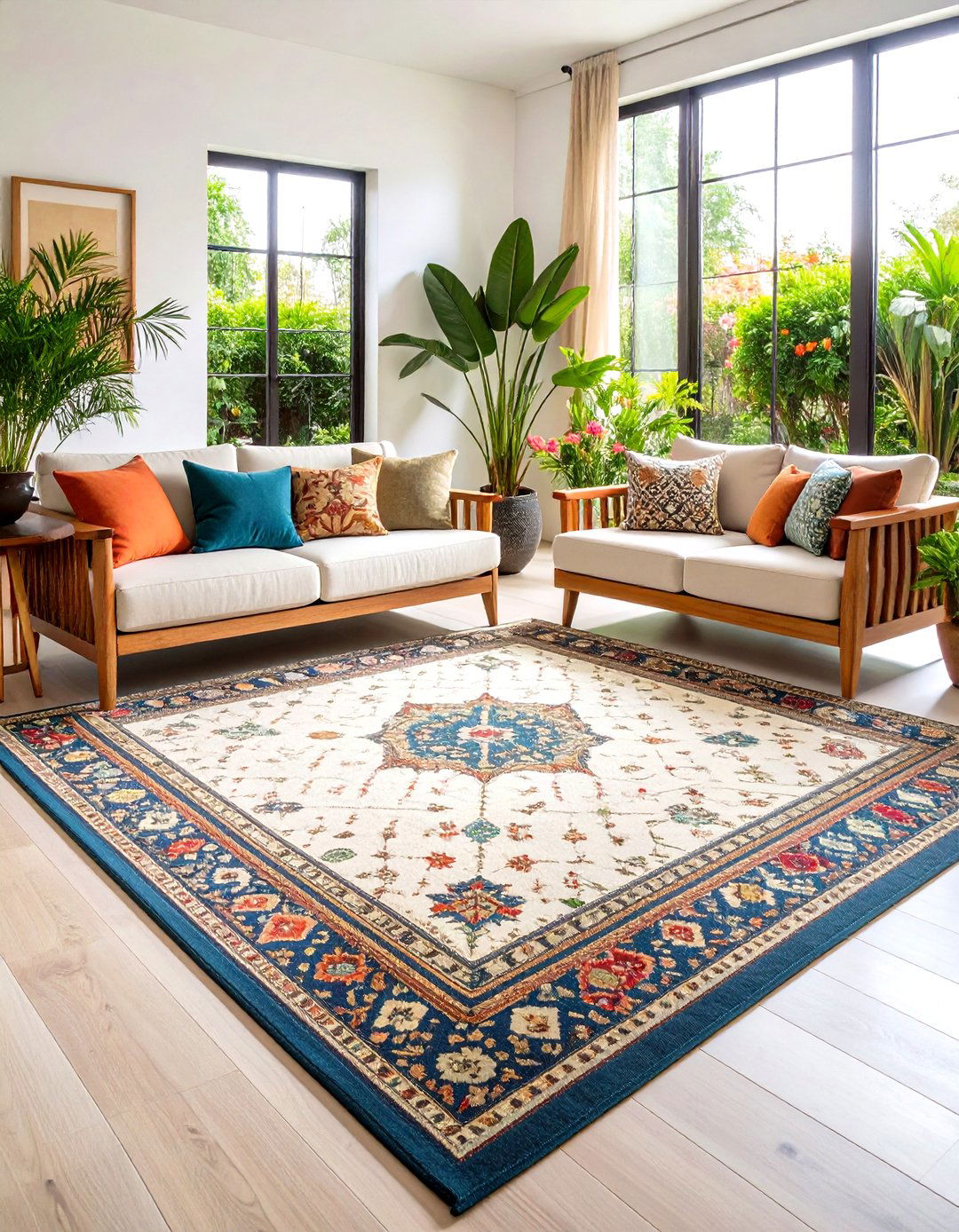
Anchor core furnishings in rooms with stunning area rugs, adding statement oriental rugs for old-world flair in spaces featuring modern furniture, or contemporary geometric rugs in interiors with traditional pieces. Area rugs serve as foundation pieces that help unify disparate furniture styles while adding comfort and visual weight to your space. Choose rugs with subtle patterns or textures rather than bold, busy designs that might compete with your carefully curated furniture mix. Consider natural fiber rugs like jute or sisal for their organic texture, or opt for wool rugs in neutral tones with gentle geometric patterns. The size should be generous enough to anchor your main seating area, with front furniture legs resting on the rug's edge. This approach creates cohesion between traditional and modern pieces while defining conversation areas within larger spaces.
7. Sophisticated Transitional Kitchen Design Elements
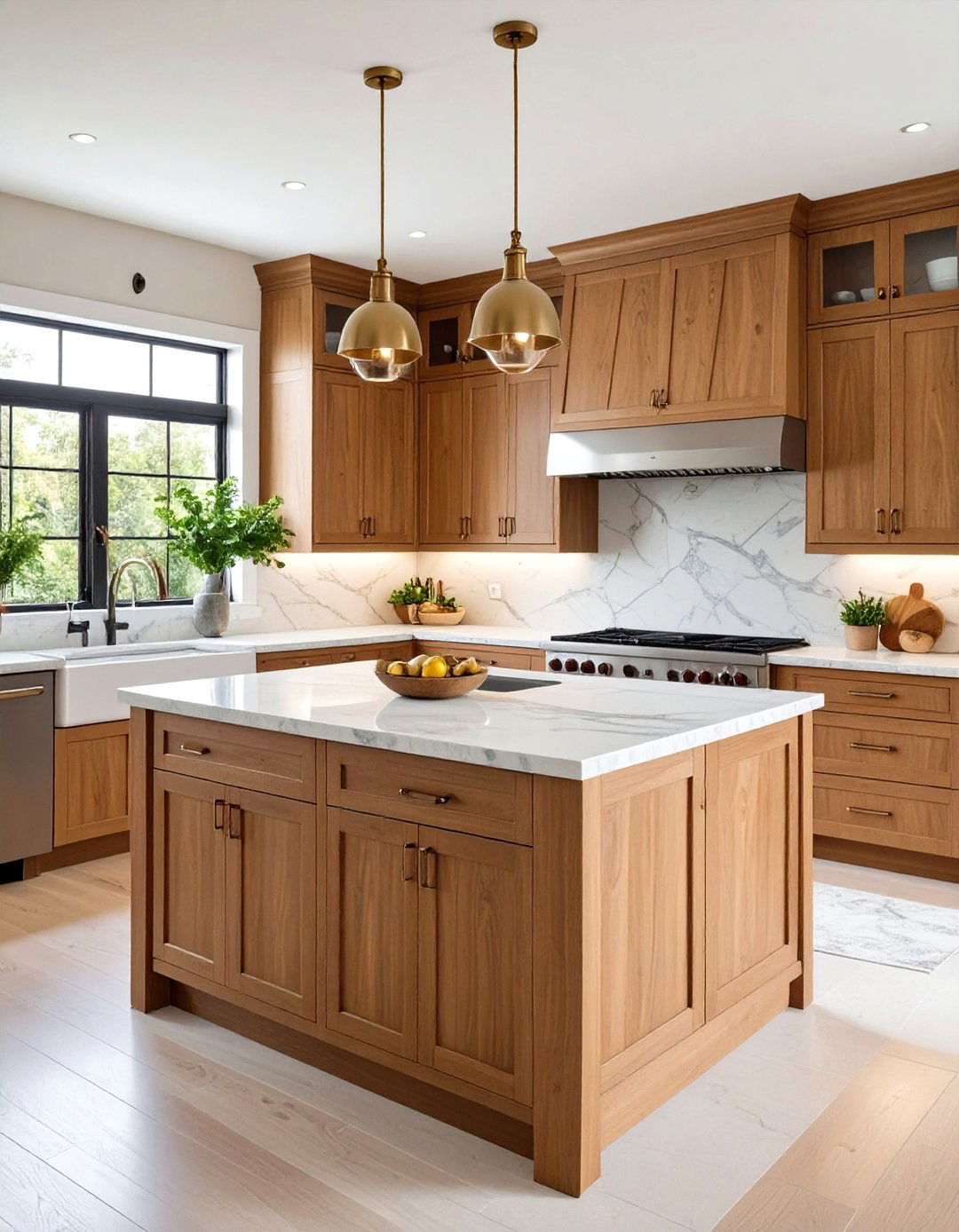
An elegant way to enhance visual appeal and add depth to transitional interior design involves incorporating shaker-style woodwork, which looks impressive on walls and kitchen cabinetry. Transitional kitchens excel at combining functional modern appliances with timeless cabinetry styles and natural materials. Choose shaker-style cabinets in painted finishes paired with natural stone or quartz countertops for sophisticated contrast. Since kitchens naturally incorporate modern touches through shiny chrome appliances, trade lacquered cabinets for paneled wooden ones with natural finishes like wood flooring and marble or granite countertops. Add traditional elements through corbels for floating shelves and crown moldings for cabinetry details. The key lies in balancing sleek functionality with warm, inviting materials that make your kitchen feel both efficient and welcoming for family gatherings and entertaining guests.
8. Transitional Bedroom Design for Restful Sophistication
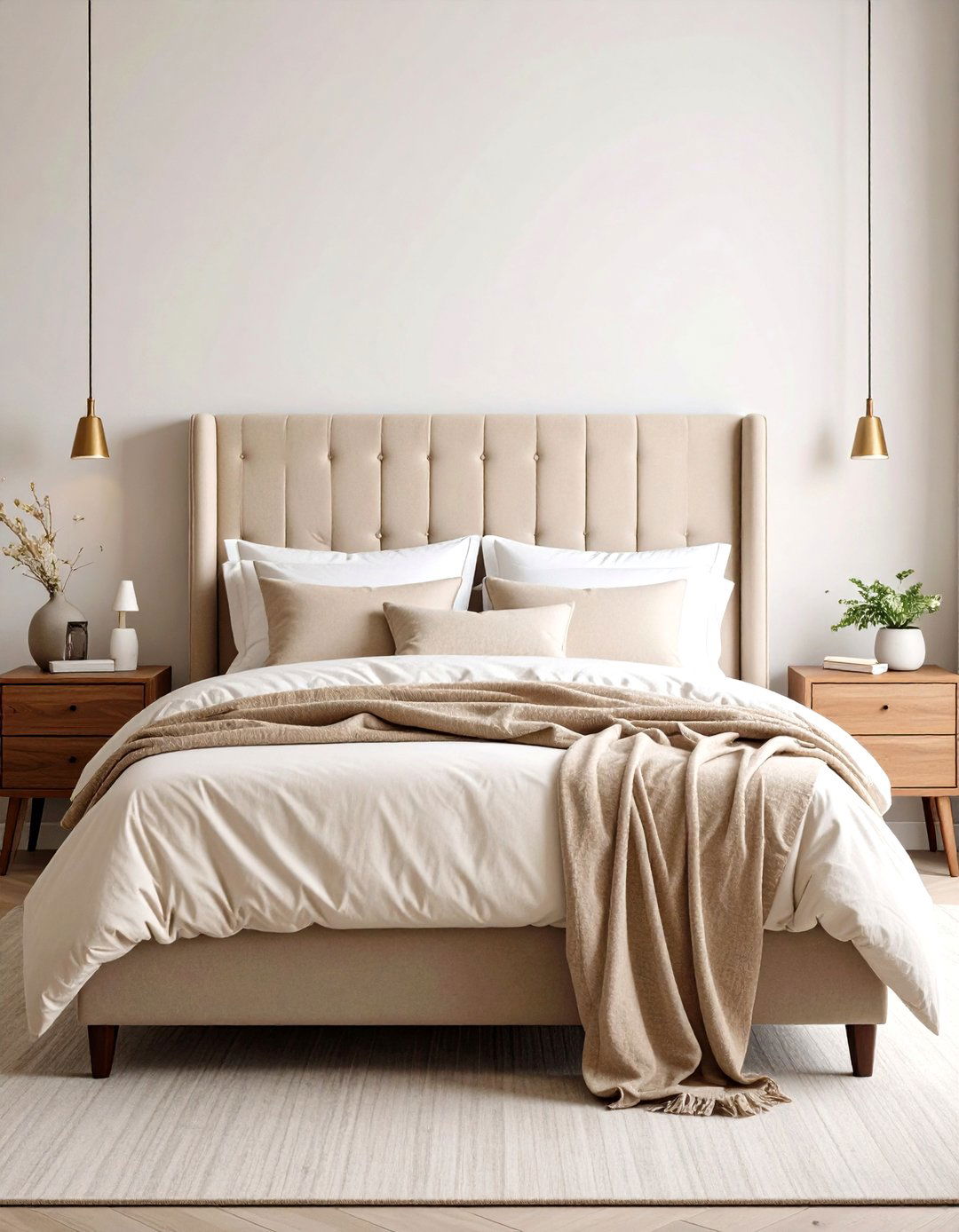
Enjoy similar charm to Chesterfield couches in bedrooms with tufted headboards, which suit transitional décor particularly well, counteracting decorative details with plain yet plush bedding. Create a serene bedroom retreat by selecting a substantial bed frame with traditional proportions but clean lines. Canopy or four-poster beds and beds with traditional curved headboards work well for transitional style, gaining modern twists when flanked by contemporary glass nightstands and classy table lamps. Layer different textures through your bedding choices - combine smooth cotton sheets with textured throws and varied pillow fabrics. Choose furniture pieces like wooden dressers with simple hardware paired with modern lighting fixtures. The bedroom should feel like a sophisticated sanctuary where traditional comfort meets contemporary function, creating the perfect environment for rest and relaxation in your transitional home.
9. Transitional Living Room Seating Arrangements for Comfort
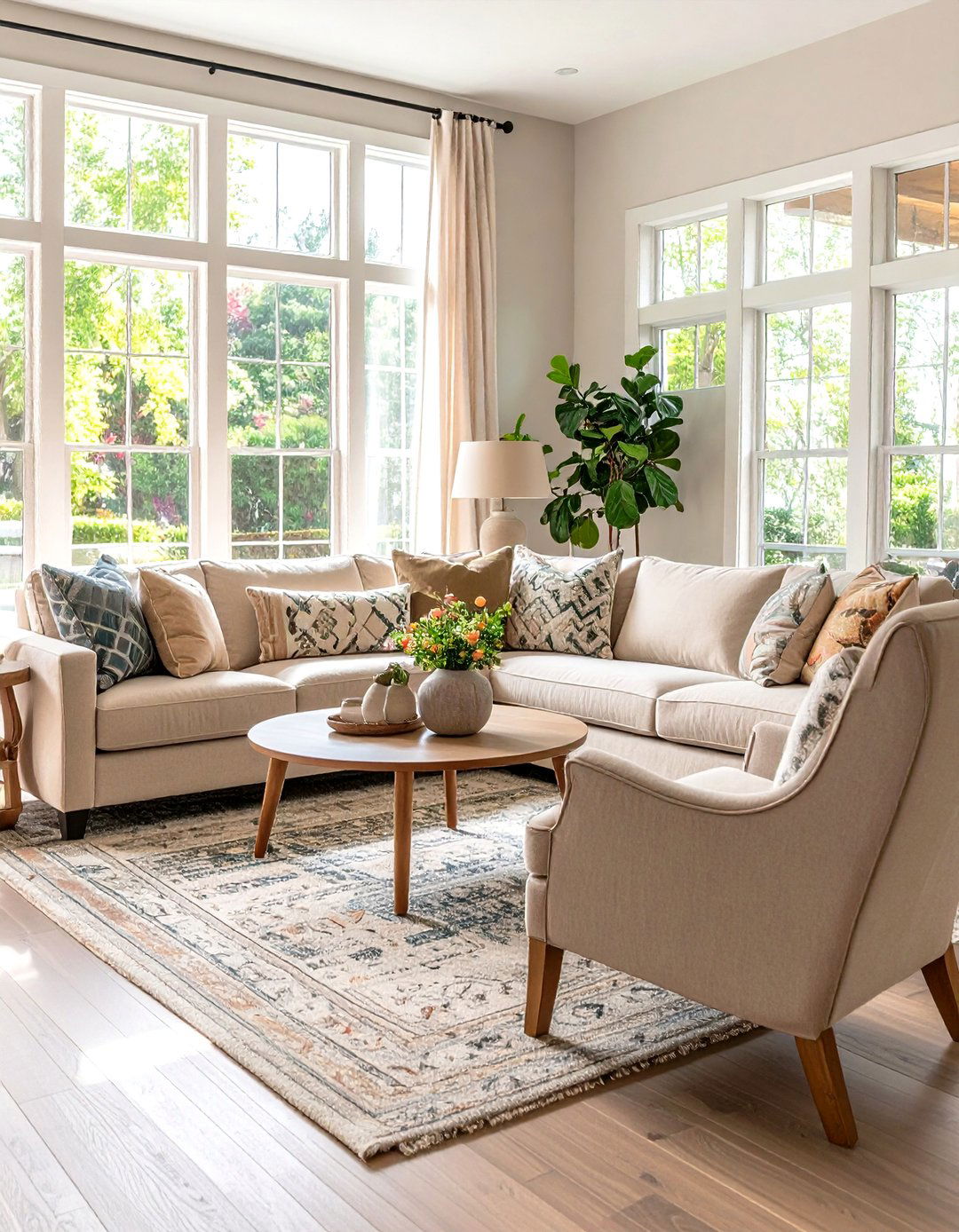
In transitional style, you'll generally see more structured arms on chairs and sofas, along with fabrics such as cotton, leather, wool, velvet, and linen, rather than nubby bouclé and sherpa upholstery. Plan your seating to encourage conversation while maintaining the sophisticated comfort that defines transitional design. Consider a large sectional sofa in neutral fabric paired with traditional wingback chairs or modern accent chairs in complementary colors. Plenty of cushions are entirely at home in transitional living rooms, with scatter cushions featuring contemporary prints or patterns brightening transitional interiors. Mix different seating heights and styles while keeping fabrics within your neutral palette. The arrangement should feel both formal enough for entertaining and relaxed enough for daily family life. This balance creates the welcoming atmosphere that makes transitional living rooms so appealing and functional for modern lifestyles.
10. Transitional Dining Room Elements for Elegant Entertaining
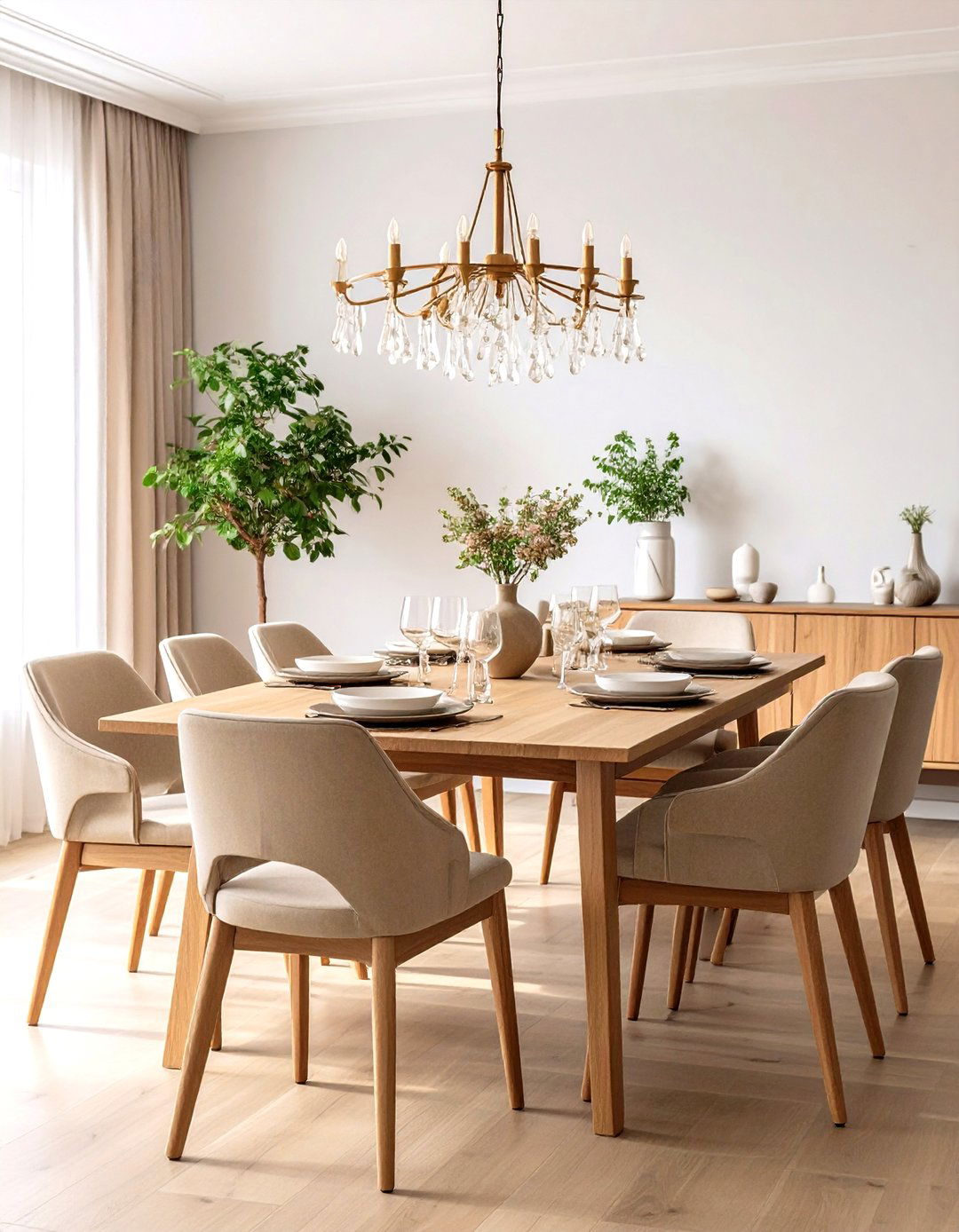
Transform your dining space into a sophisticated gathering place by combining traditional dining furniture with contemporary lighting and accessories. Choose a substantial wooden dining table with clean lines, paired with upholstered chairs that offer both comfort and style. Transitional lighting fixtures come in various forms like chandeliers, pendants, wall sconces, and floor lamps, with choosing the right scale and material being key. Install a statement chandelier that bridges traditional and modern elements - perhaps featuring classic proportions with contemporary materials or finishes. Add a sideboard or buffet with simple hardware for both storage and serving during entertaining. Layer textures through table linens, placemats, and centerpieces that complement your neutral color scheme. The dining room should feel special enough for formal occasions yet comfortable enough for everyday family meals, embodying the versatile nature of transitional design.
11. Transitional Storage Solutions That Blend Function and Beauty
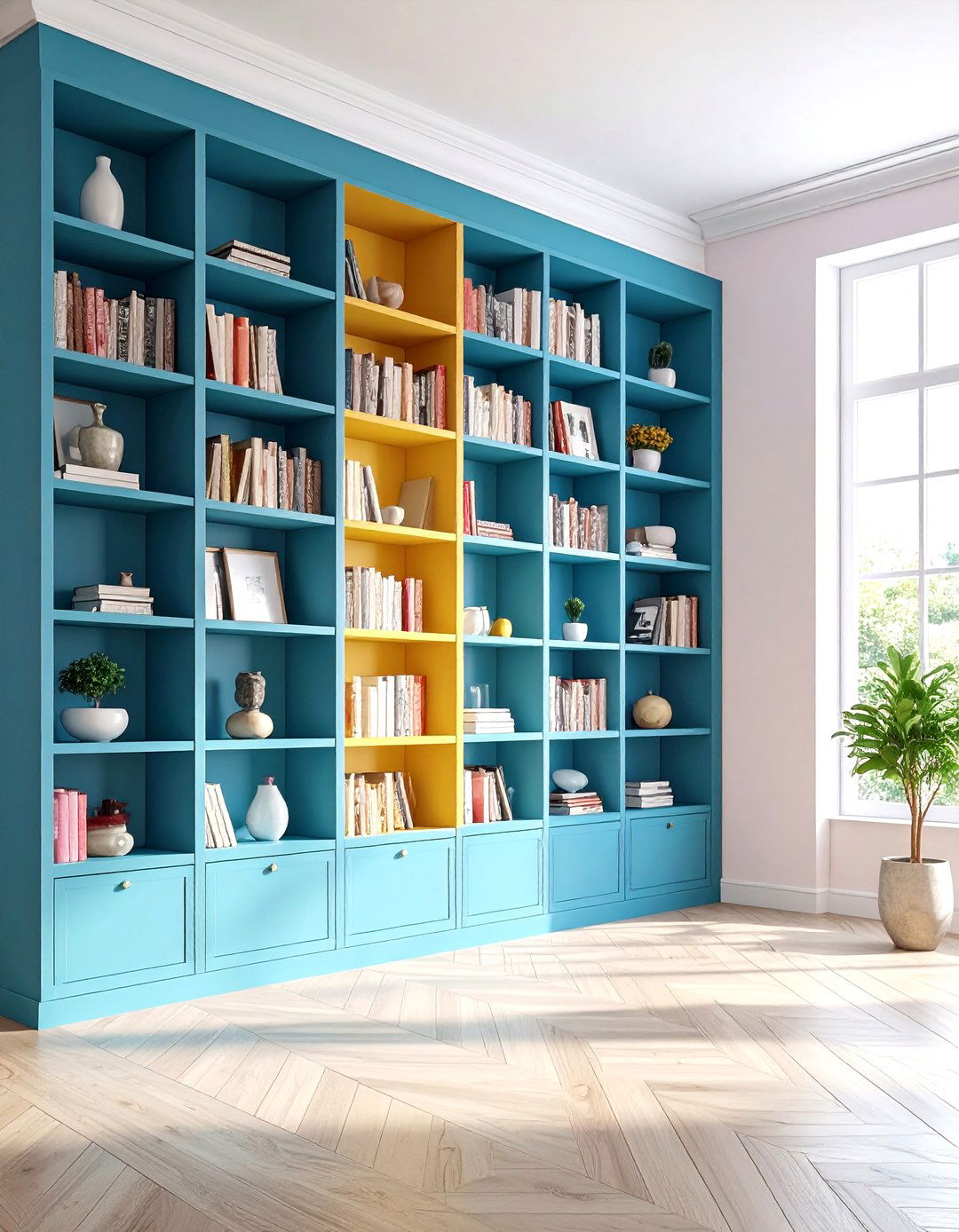
Because transitional style interiors favor practicality, turn functional pieces into features, with bookshelves serving as ideal design décor pieces when lined with books or interspersed with photos and mementos. Design storage solutions that serve dual purposes while maintaining the clean, sophisticated aesthetic of transitional style. Built-in shelving with traditional proportions but simplified detailing provides ample storage while showcasing books, art, and personal collections. Choose storage ottomans in neutral fabrics that provide both seating and hidden storage for living rooms. Display cases can serve aesthetic and functional purposes, making amazing bathroom cabinets for extra towels and cosmetics in chic containers, or wonderful alternatives for home bar cabinets. Consider armoires or entertainment centers with clean lines that can house modern electronics while maintaining traditional proportions. The key is selecting pieces that organize your belongings while contributing to your overall design aesthetic.
12. Transitional Bathroom Design for Spa-Like Serenity
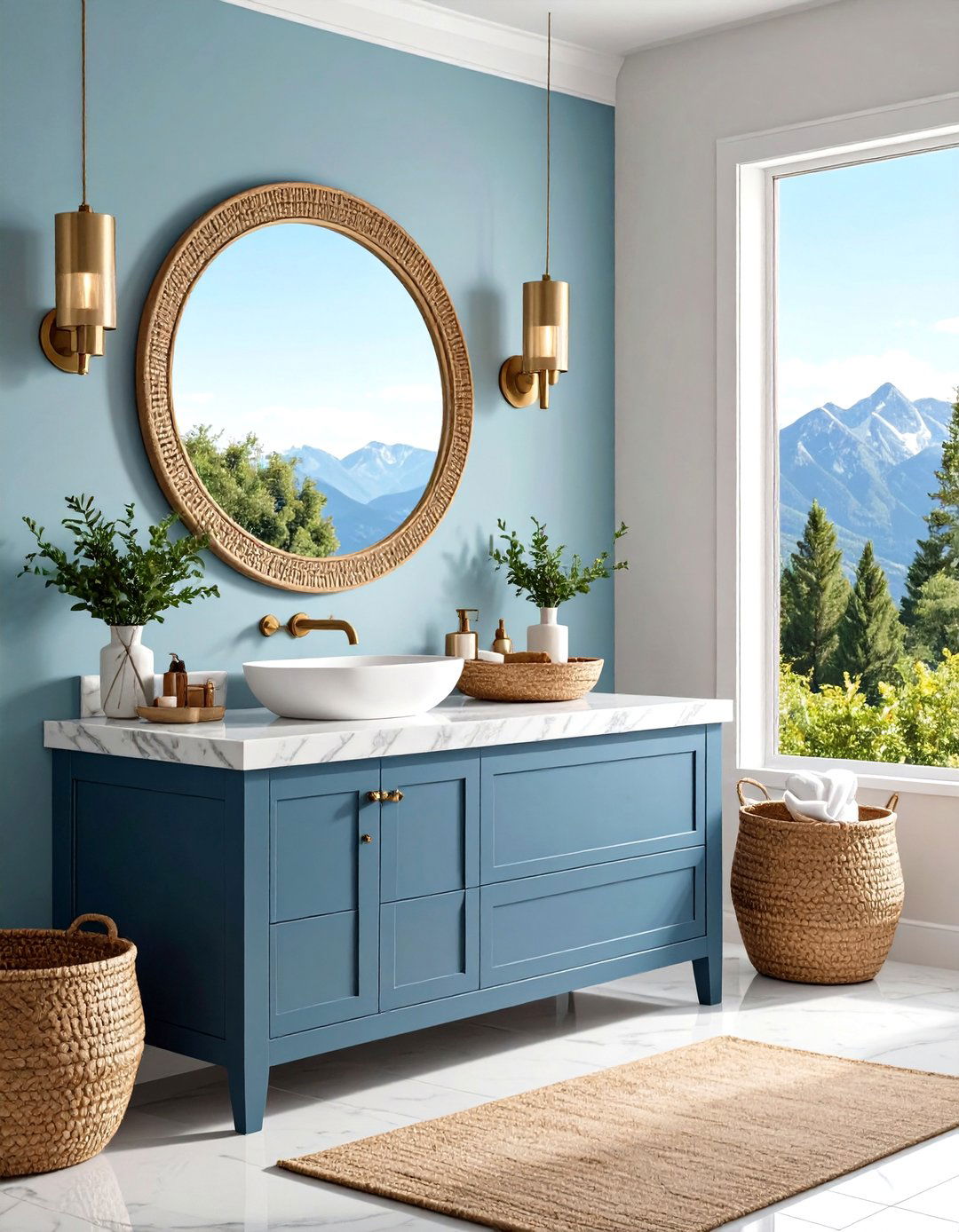
Marble and natural stone are popular material choices for bathrooms, while contemporary tiles like glass brick or penny tiles create interest when used as accents in transitional style bathrooms. Create a calming bathroom retreat by combining modern fixtures with traditional materials and timeless design elements. Choose a vanity with traditional proportions but simplified detailing, topped with natural stone or quartz countertops. Clawfoot tubs are wonderful vintage pieces from the 19th century that mesh well with modern styles when paired with glass and metal elements. Install contemporary lighting fixtures with classic proportions, and add warmth through wooden elements or woven baskets for storage. The overall feel should be calm and serene, with colors evoking the same peaceful feeling for users. Layer different textures through towels, bath mats, and window treatments while maintaining your neutral color palette for spa-like tranquility.
13. Transitional Wall Decor and Art Display Strategies
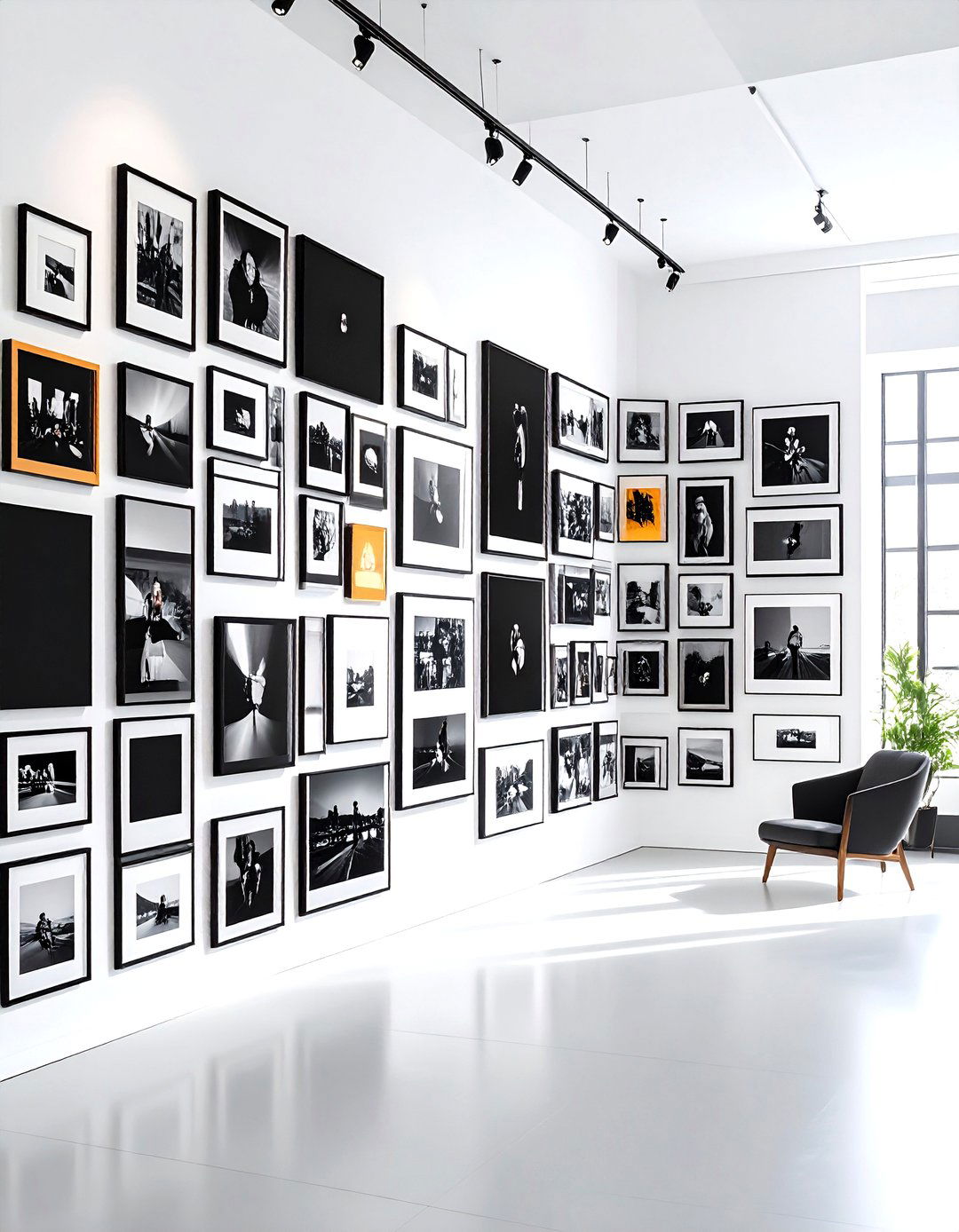
Monochrome gallery walls allow you to showcase sentimental moments in chic but low-key manners, with such arrangements adding personal touches to any neutral-toned transitional home transformation. Create sophisticated wall displays that complement rather than compete with your transitional furniture and décor. Choose artwork and photography in neutral tones or black and white to maintain your cohesive color scheme. When displaying photos or artwork, do so in understated ways using basic white matting and simple, clean-lined frames, with black and white photos going great with transitional style. Mix different sizes and orientations while maintaining consistent framing styles for unity. Consider one large statement piece paired with smaller complementary works, or create symmetrical arrangements that appeal to traditional sensibilities. The goal is adding personality and visual interest without overwhelming your carefully balanced transitional aesthetic. Your wall décor should enhance the room's sophisticated atmosphere while reflecting your personal style.
14. Transitional Flooring Options for Seamless Flow
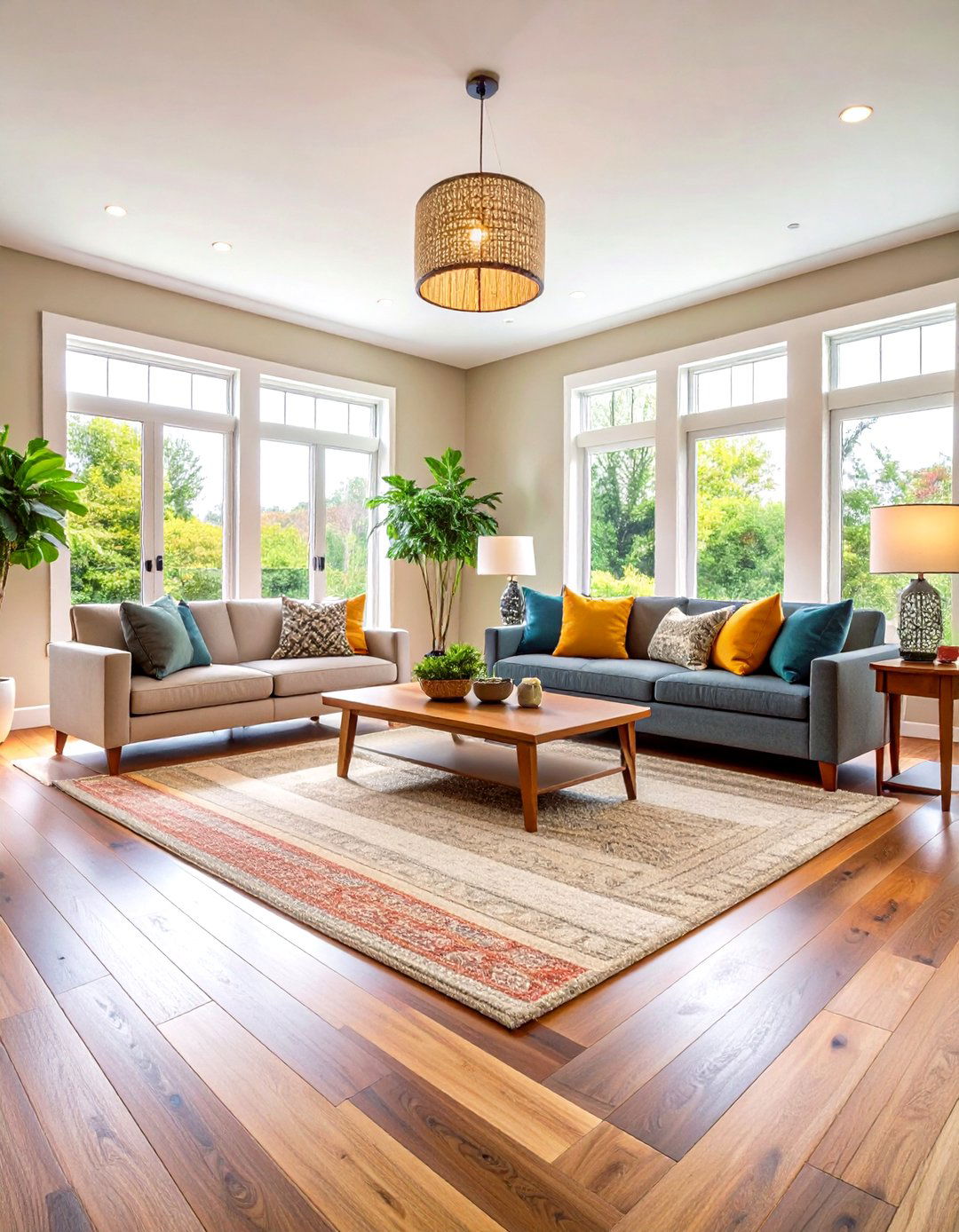
Choose flooring materials that provide neutral foundations for your transitional design while ensuring durability and timeless appeal. When choosing flooring in transitional style, go for choices that play well in the background, with stone, tile, natural woods, and rugs and carpeting kept to restrained color palettes. Hardwood floors in medium tones offer warmth and traditional appeal while working beautifully with both vintage and contemporary furniture pieces. Consider wide-plank wooden floors for a more relaxed, updated feel, or choose natural stone tiles in neutral tones for areas requiring more durability. Area rugs become crucial for defining spaces and adding softness underfoot. Earthy tones will keep dominating living room color palettes in 2025, making natural materials perfect choices. The flooring should create seamless flow between rooms while providing practical performance for daily life. Select materials that age gracefully and complement your overall transitional aesthetic for years to come.
15. Transitional Outdoor Living Spaces for Extended Comfort
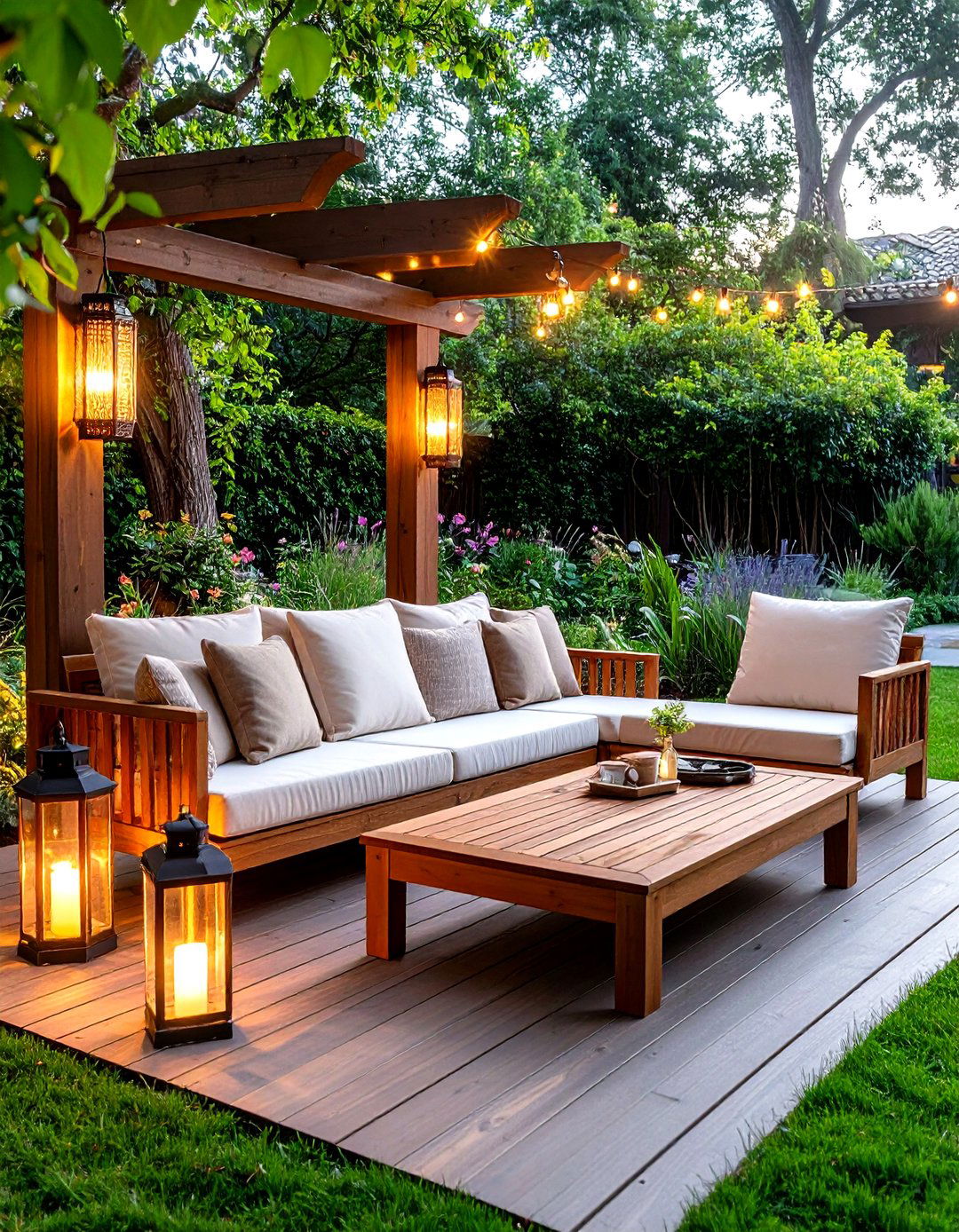
Extend your transitional design aesthetic to outdoor spaces, creating seamless connections between indoor and outdoor living areas. Choose outdoor furniture with clean lines and comfortable proportions, selecting materials like teak, aluminum, or all-weather wicker in neutral tones. There is continued interest, especially among Gen Z and Millennials, in prioritizing shopping small and local for furniture, including outdoor pieces. Add weather-resistant cushions and pillows in fabrics that complement your indoor color palette. Consider installing outdoor lighting that echoes your interior choices - perhaps lantern-style fixtures with traditional proportions but simplified details. Create defined outdoor rooms using area rugs designed for exterior use, and add natural elements through planters and garden beds. The outdoor space should feel like a natural extension of your home's transitional style, providing comfortable areas for relaxation and entertaining while connecting with nature and maintaining sophisticated design continuity.
16. Transitional Home Office Design for Productive Elegance
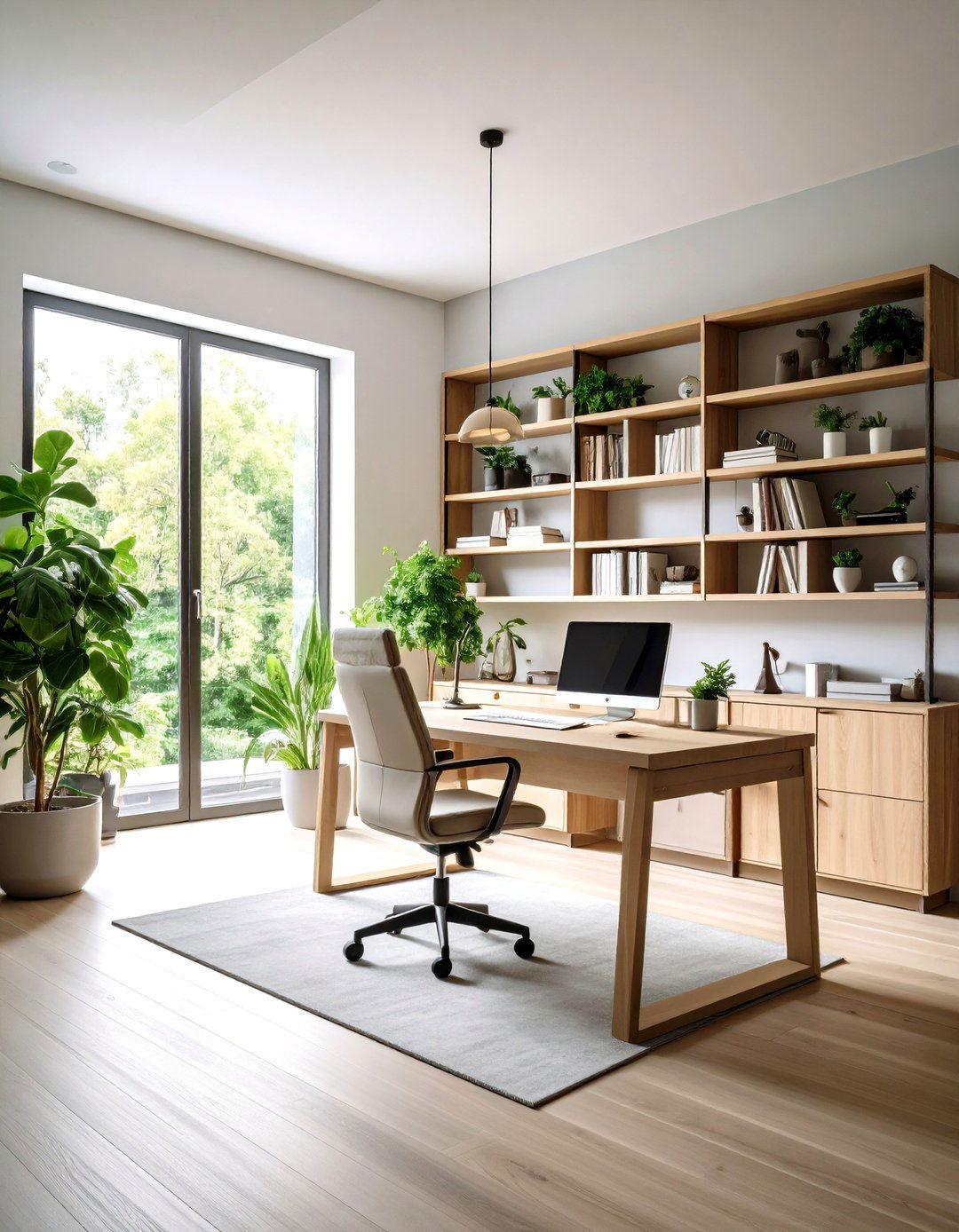
Design a home office that balances productivity with the sophisticated comfort that defines transitional style. Choose a substantial desk with traditional proportions but clean, simplified details, paired with a comfortable office chair that offers both ergonomic support and aesthetic appeal. Modular and flexible furniture will dominate interior design trends in 2025, thanks to versatility and adaptability that can meet evolving needs of modern households. Add storage through built-in shelving or attractive bookcases that display both work materials and personal items. Install task lighting that provides adequate illumination while contributing to your overall design aesthetic. Multifunctional furniture offers practical solutions for small spaces, making pieces like storage ottomans or filing cabinets that double as side tables particularly valuable. Choose colors and materials that coordinate with the rest of your home while creating an environment conducive to focus and creativity. The office should feel professional yet welcoming, supporting both work tasks and video calls.
17. Transitional Color Accent Strategies for Subtle Interest
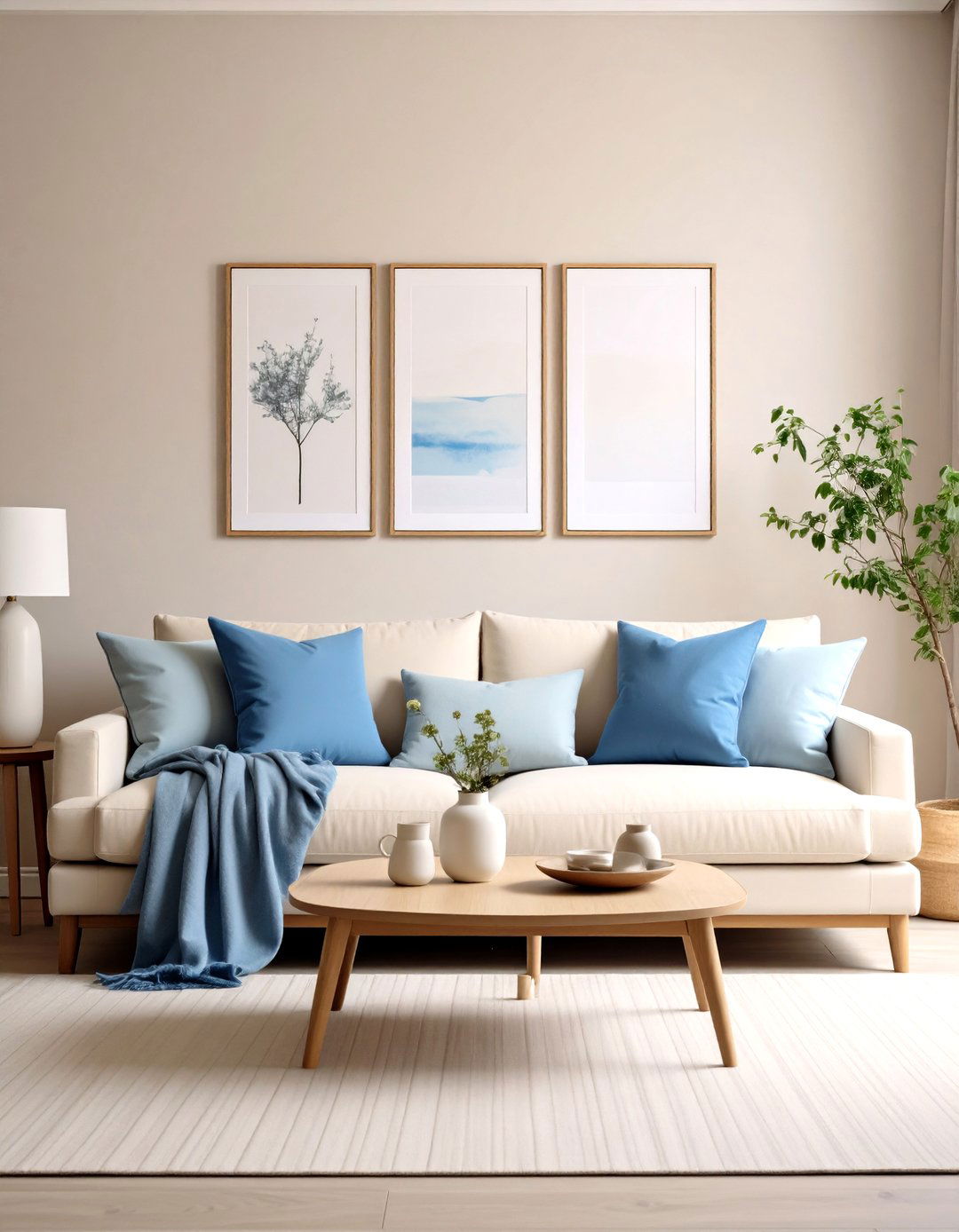
If you must have a pop of color somewhere in the room, keep it to one or two accents, such as in throw blankets, pieces of artwork, or lamps. While transitional design relies heavily on neutral foundations, strategic color placement can add personality and visual interest without overwhelming the sophisticated atmosphere. Choose one or two accent colors that complement your neutral palette - perhaps soft blues, muted greens, or warm grays. Yellow is a great color to use with neutrals because it's so close in tone that it blends effortlessly, creating spaces that can be soft while still providing accent colors. Introduce these colors through easily changeable elements like throw pillows, artwork, or fresh flowers. The beauty of transitional color schemes lies in muted base palettes that allow you to use other colors as accents to highlight areas you love. This approach allows you to update your space seasonally or as your preferences evolve while maintaining the timeless foundation that makes transitional design so enduring and appealing.
18. Transitional Window and Door Hardware for Cohesive Details
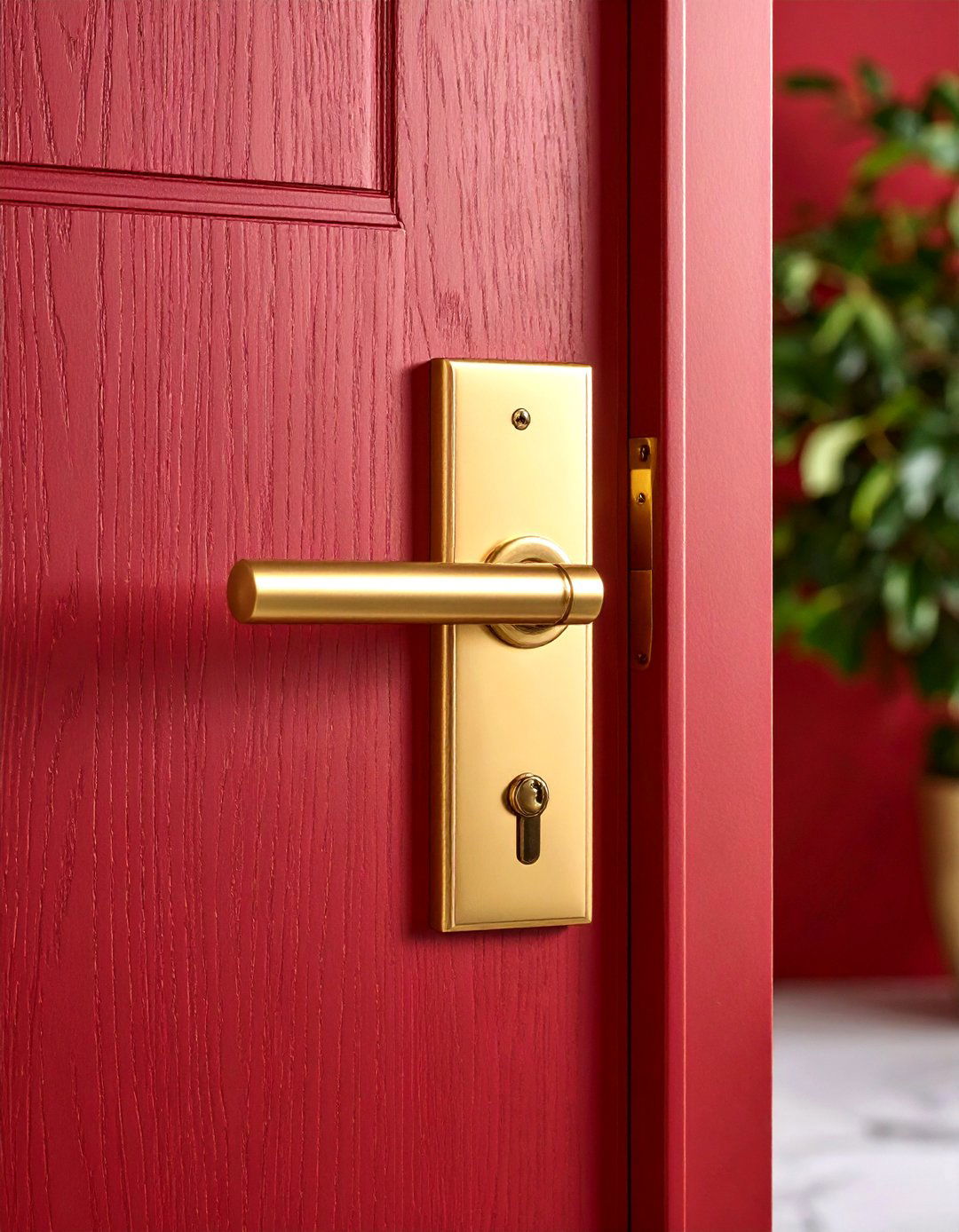
Select hardware finishes and styles that bridge traditional and contemporary elements while creating cohesive flow throughout your transitional home. Transitional wall lights incorporate classic materials like bronze, brass, and brushed nickel with sophisticated looks and clean lines. Choose cabinet pulls, door handles, and window hardware in consistent finishes - perhaps brushed brass, oil-rubbed bronze, or brushed nickel that complements your lighting choices. Avoid overly ornate traditional hardware or stark contemporary pieces that might tip your design too far in either direction. Consider simple bar pulls for cabinets, classic lever handles for doors, and streamlined window cranks or locks. Glass and metal combinations work well in both modern and transitional interiors, thanks to their timeless appeal and long-lasting durability. The hardware should feel intentional and coordinated while supporting the overall sophisticated aesthetic. These details might seem small, but they contribute significantly to the polished, cohesive appearance that distinguishes well-executed transitional design.
19. Transitional Textile and Fabric Combinations for Layered Comfort
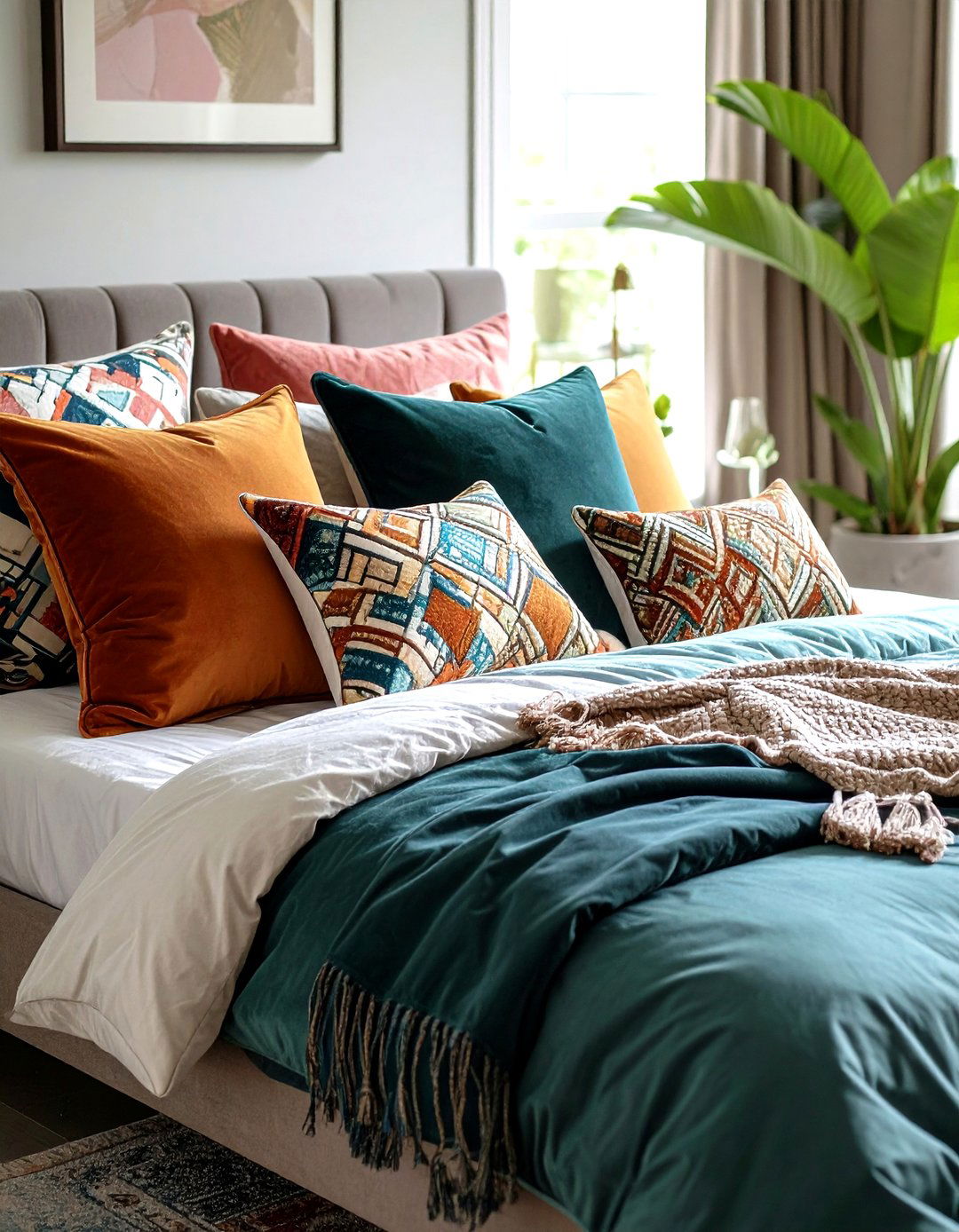
The elemental nature of transitional palettes offers considerable latitude when it comes to fabrics, with graphic patterns on overstuffed sofas feeling right at home with textured chenilles drawn across sleek wood frames. Layer different textures and patterns to create visual interest while maintaining the sophisticated comfort that defines transitional style. Choose fabrics with varied textures - smooth cotton, nubby linen, soft wool, and luxurious velvet - while keeping colors within your neutral palette. With its rich, soft texture and range of color opportunities, velvet creates dynamic looks whether used for cushion covers, sofas, or armchairs. Mix solid fabrics with subtle patterns like small geometrics, tone-on-tone designs, or classic stripes. Avoid busy florals or bold patterns that might overwhelm your carefully balanced aesthetic. Don't overdo patterns - if you're picking curtains or rugs, stick to understated designs with no punches, pops, or bold prints. The goal is creating layers that add warmth and personality while supporting the overall tranquil, sophisticated atmosphere.
20. Transitional Seasonal Decorating for Year-Round Appeal
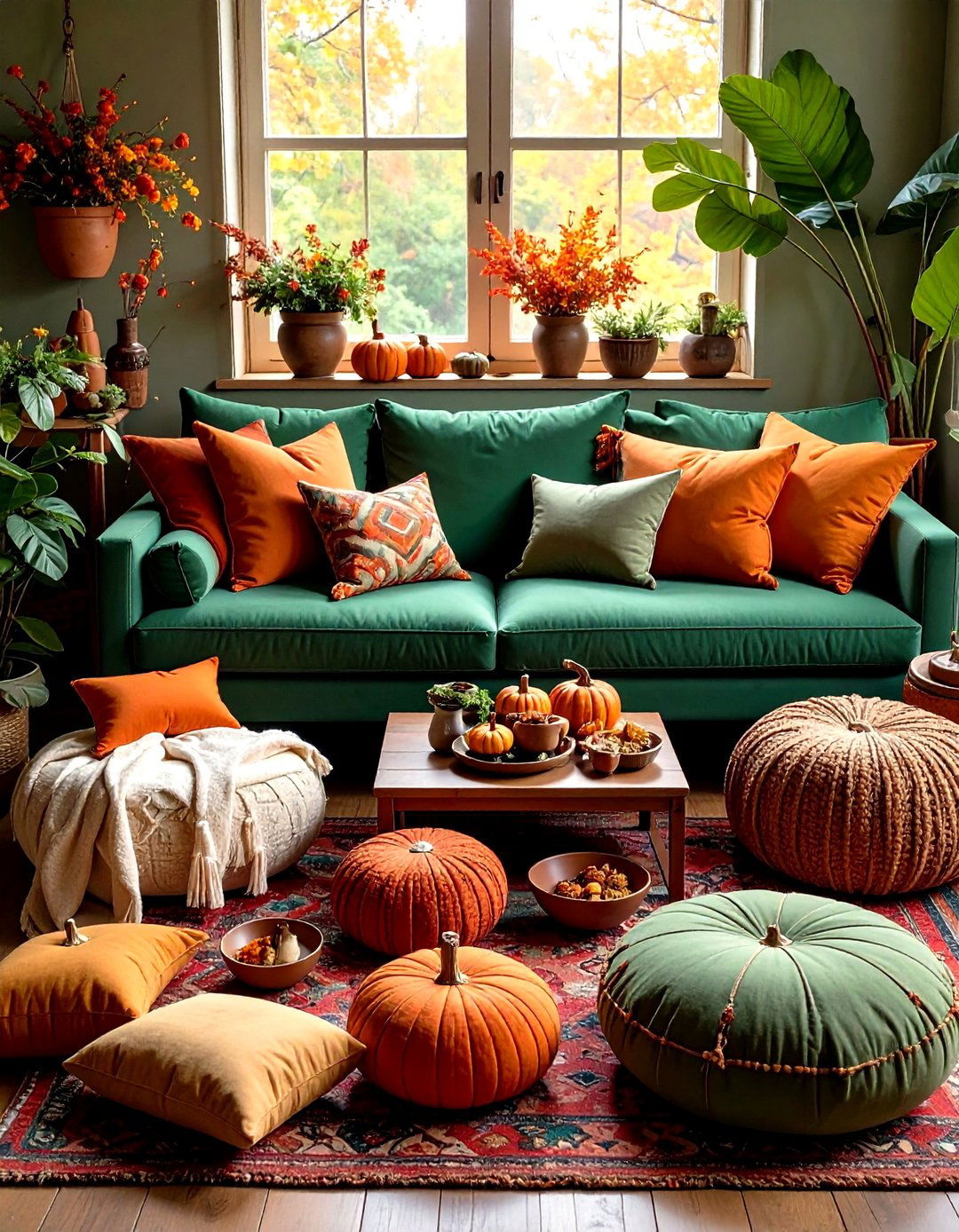
Adapt your transitional spaces for different seasons while maintaining the sophisticated, timeless aesthetic that defines this design style. Earthy neutrals like terracotta, ochre, and sage bring grounding, calming effects to interiors, reflecting nature and promoting tranquility and comfort. Switch out throw pillows, blankets, and small accessories to reflect seasonal changes without disrupting your overall design scheme. During warmer months, incorporate lighter fabrics and fresh greenery, while cooler seasons call for warmer textures and deeper accent colors within your neutral palette. Vintage and retro styles are making strong comebacks with modern twists, with mid-century modern furniture continuing popularity through eclectic mixes of styles from different decades. Add seasonal elements through natural materials like branches, seasonal flowers, or textural objects that complement your existing décor. The key is making subtle adjustments that refresh your space while preserving the balanced, sophisticated foundation that makes transitional design both timeless and adaptable to changing needs and preferences throughout the year.
Conclusion:
Transitional interior design offers the perfect solution for creating homes that feel both sophisticated and comfortable, blending the best elements of traditional and contemporary styles. This timeless approach allows you to mix different eras and styles while maintaining balance, making it ideal for those who want spaces that evolve with their changing needs. The neutral color palettes, natural materials, and carefully curated mix of furniture create environments that support both daily living and special occasions. As we move through 2025, this balanced approach continues gaining popularity among homeowners seeking adaptable spaces that combine style with functionality, sustainability, and wellness. Whether you're updating a single room or transforming your entire home, these transitional design ideas provide the foundation for creating spaces that truly reflect your personal style while maintaining the sophisticated comfort that makes every day feel special.



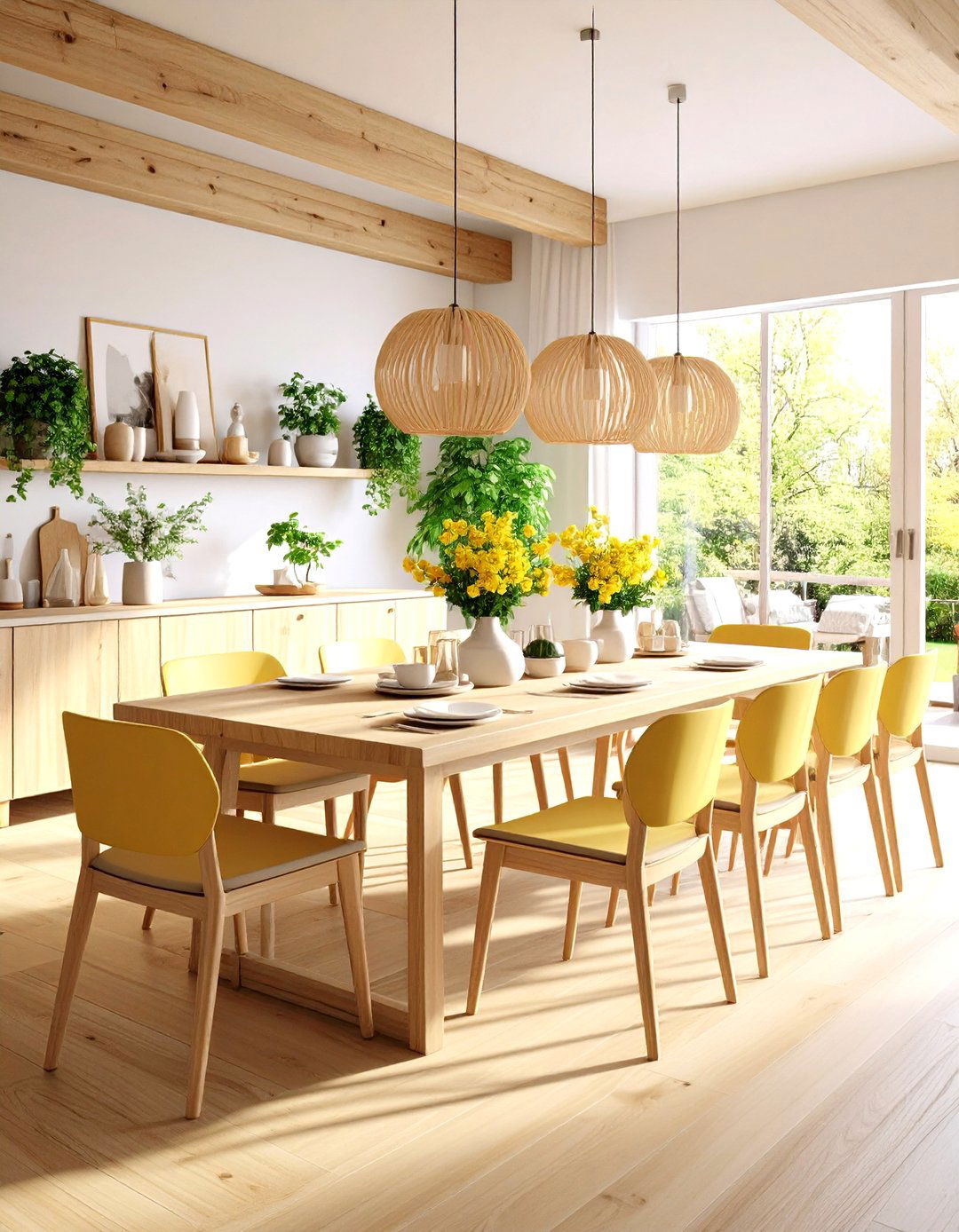
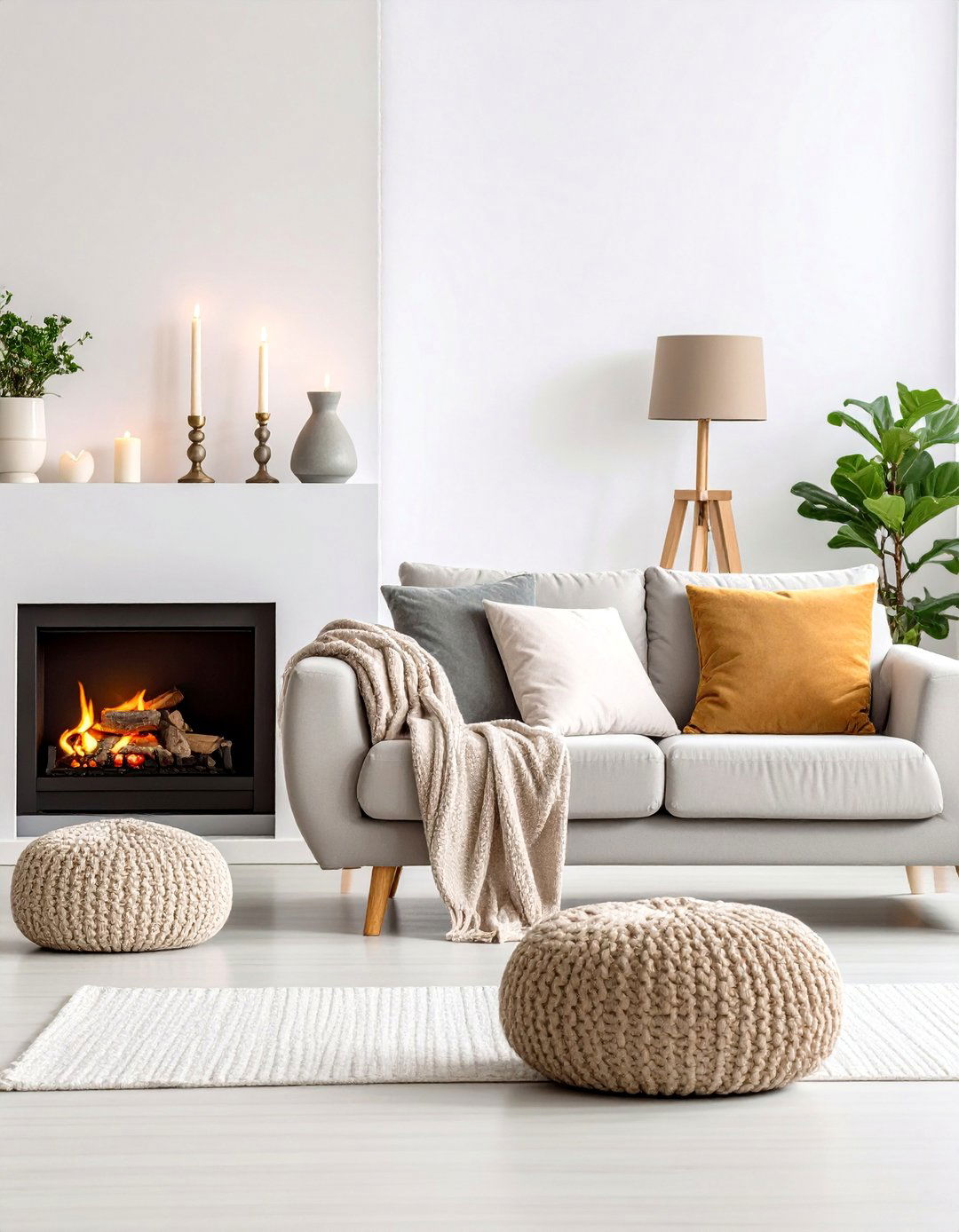


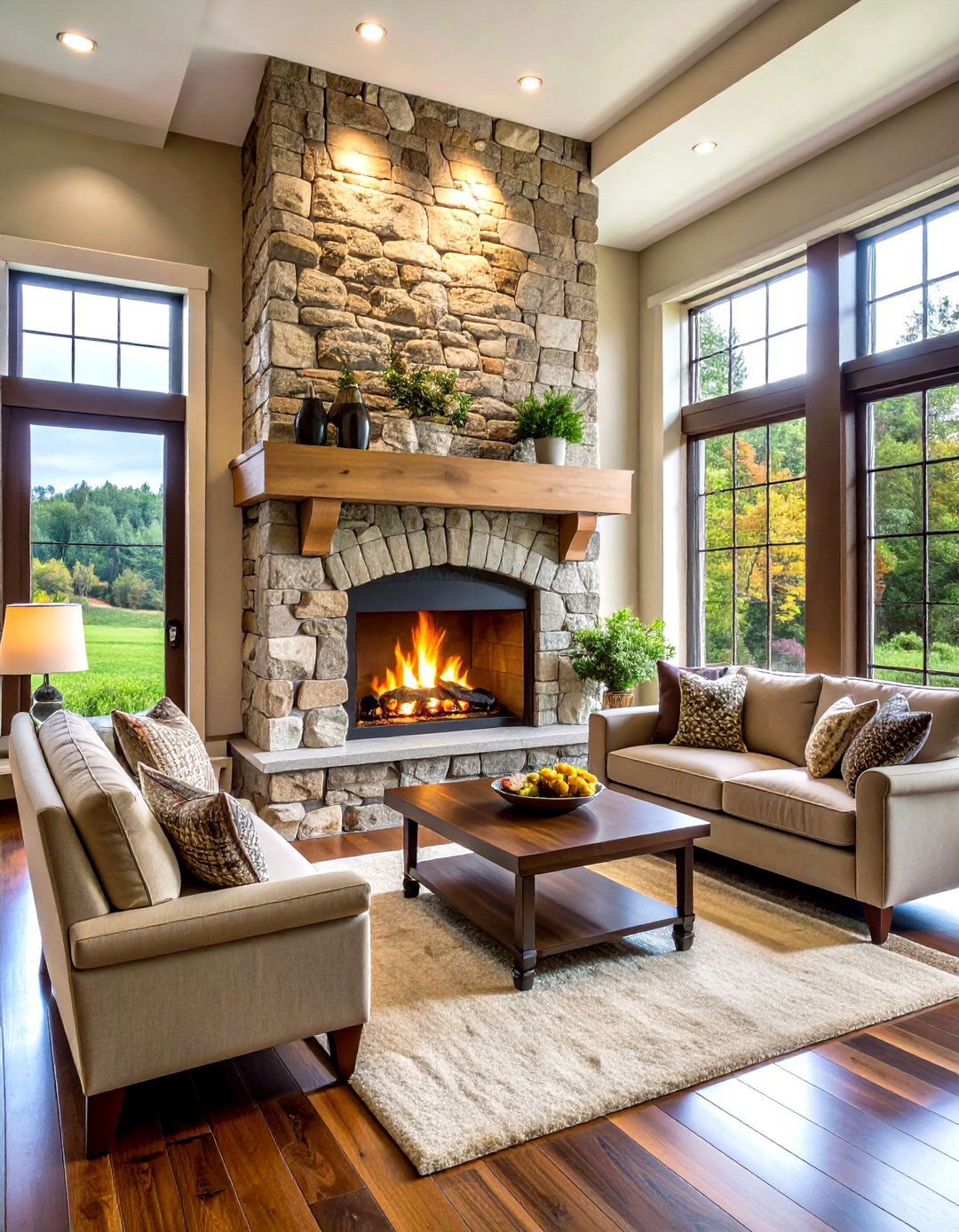

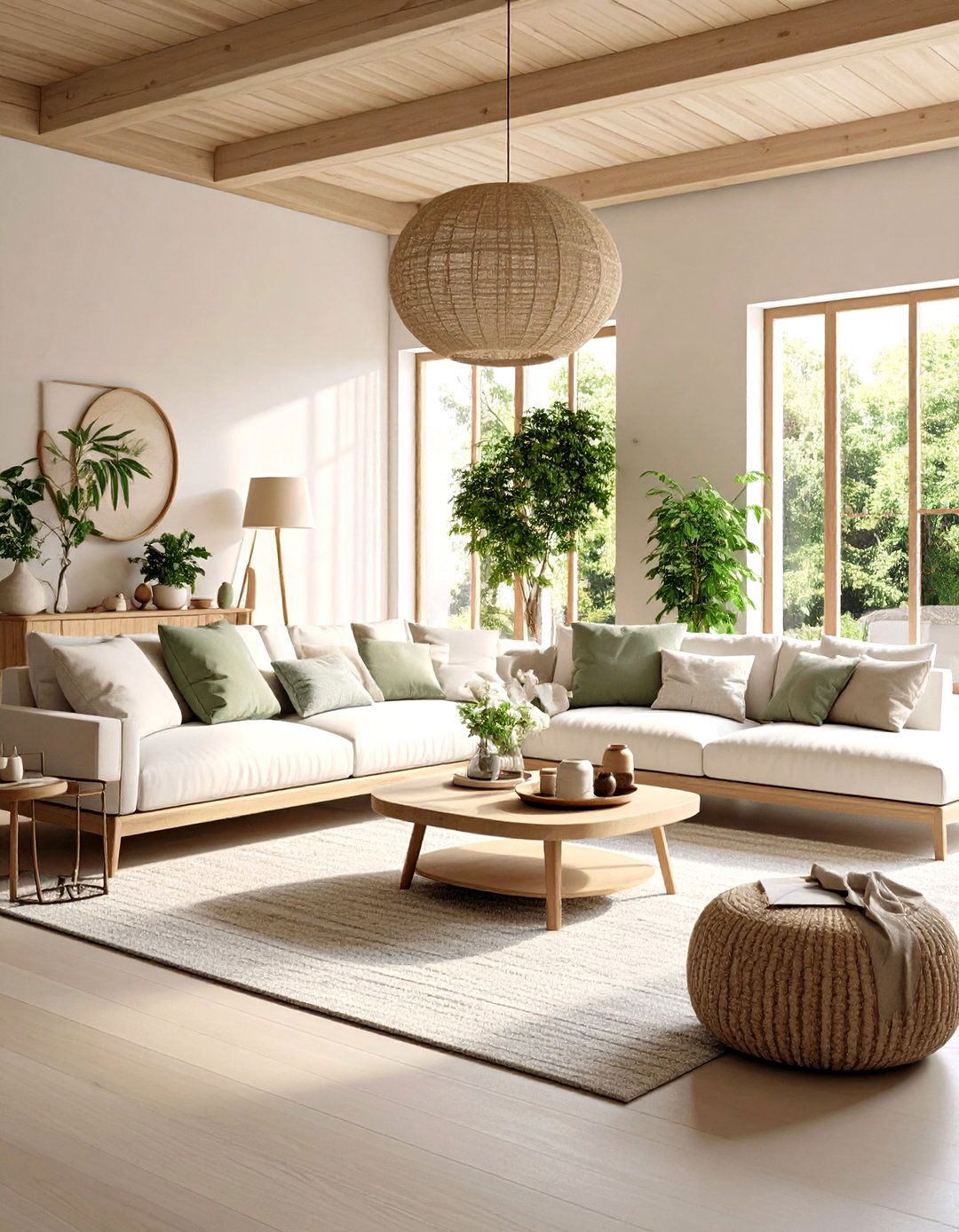
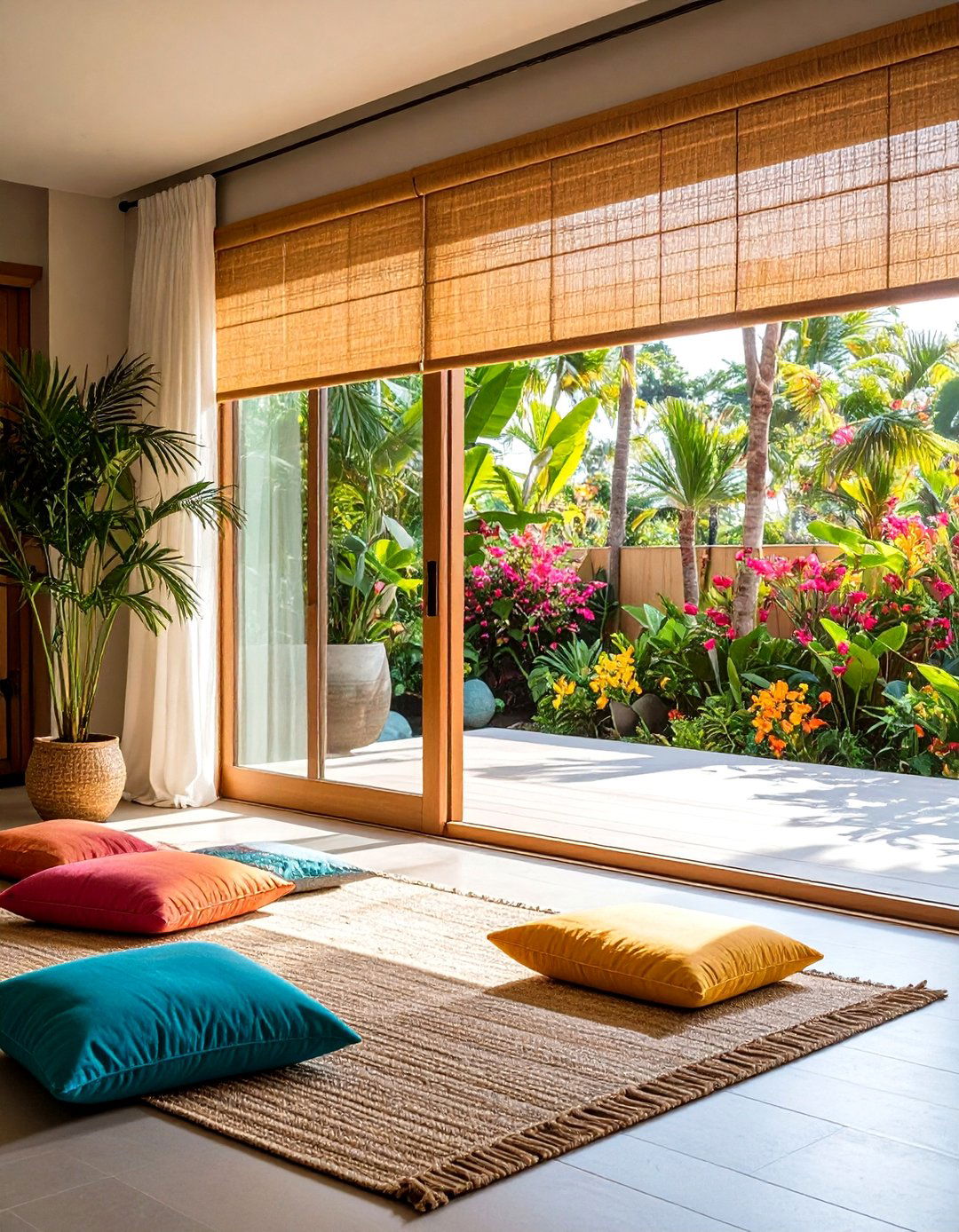
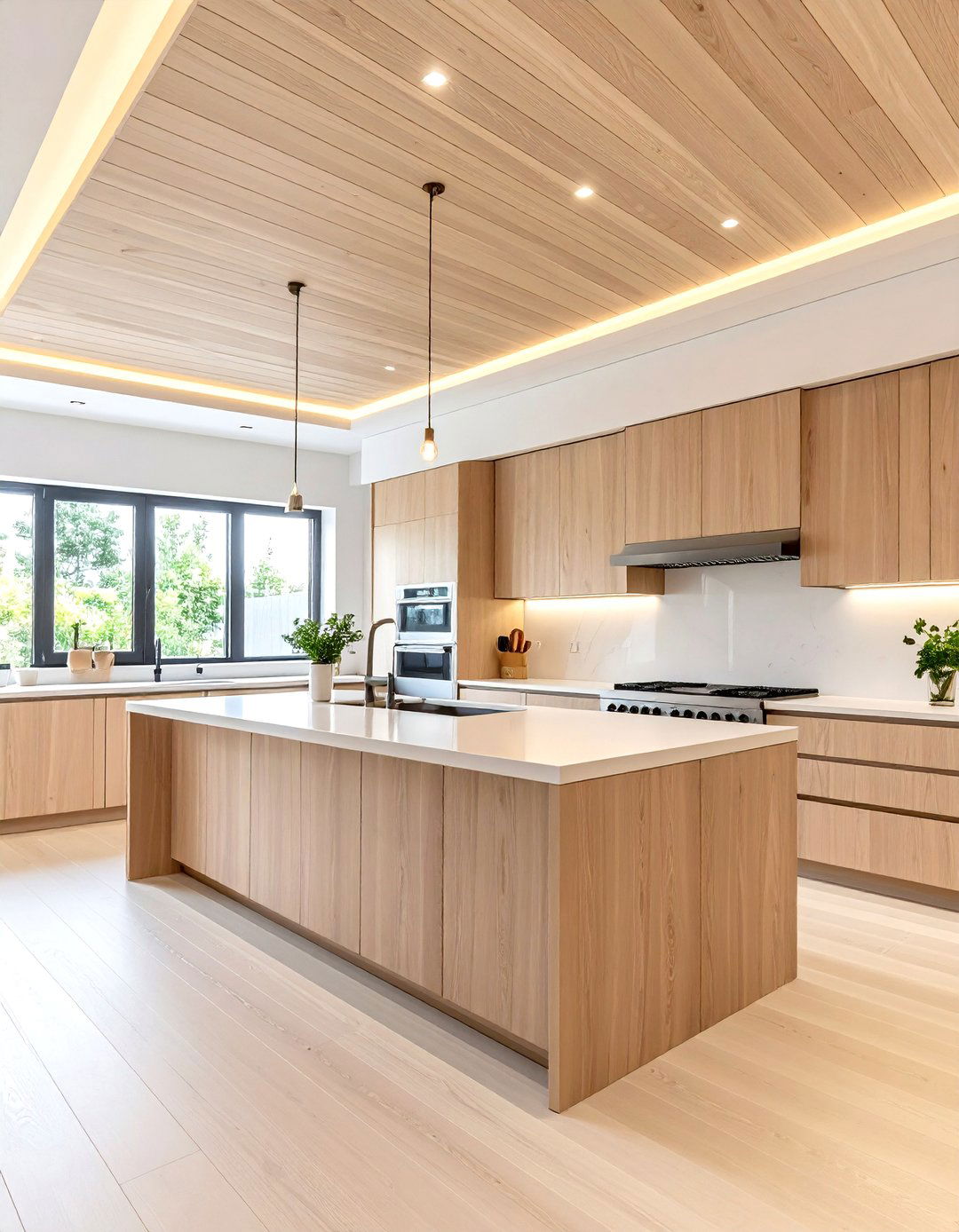
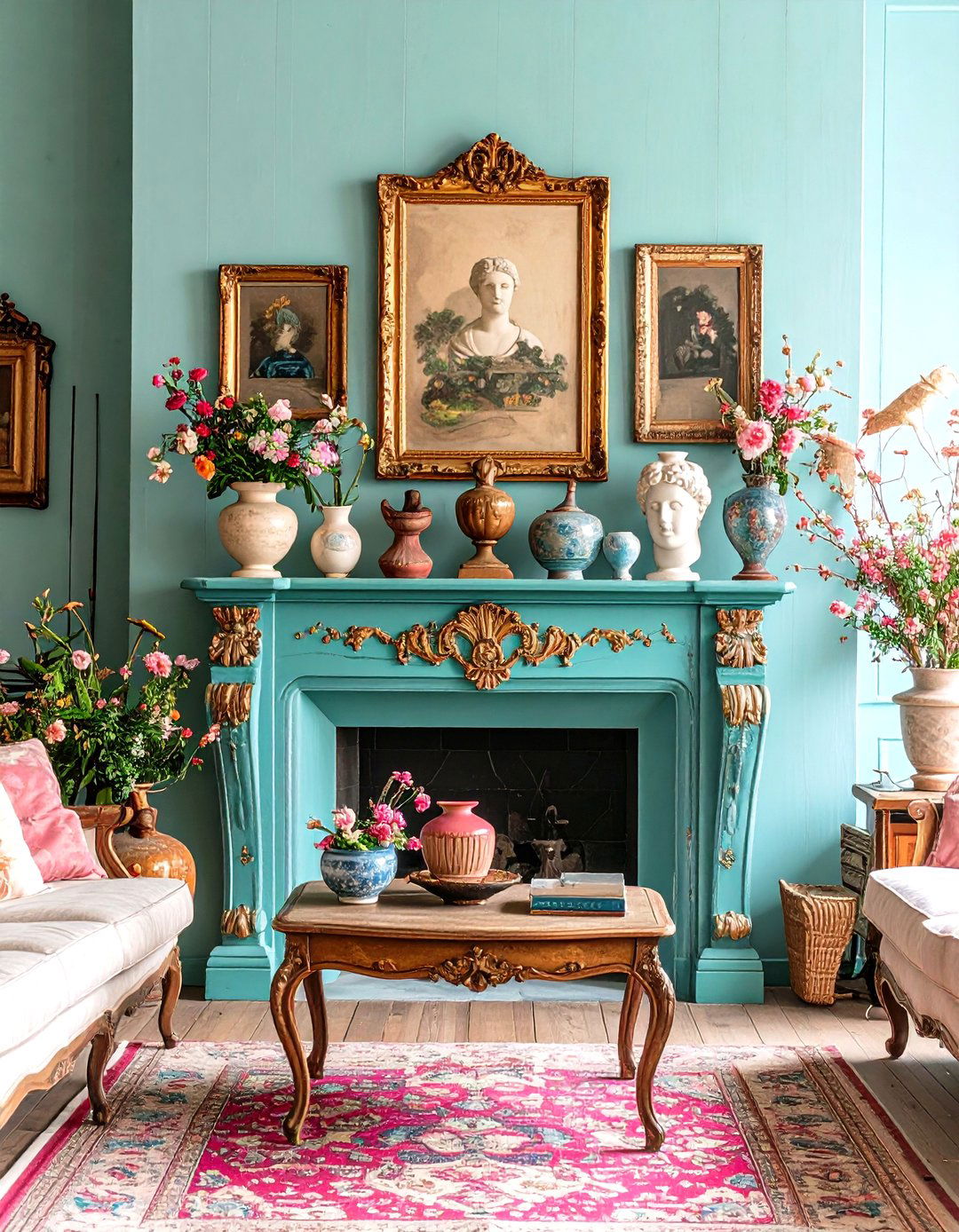
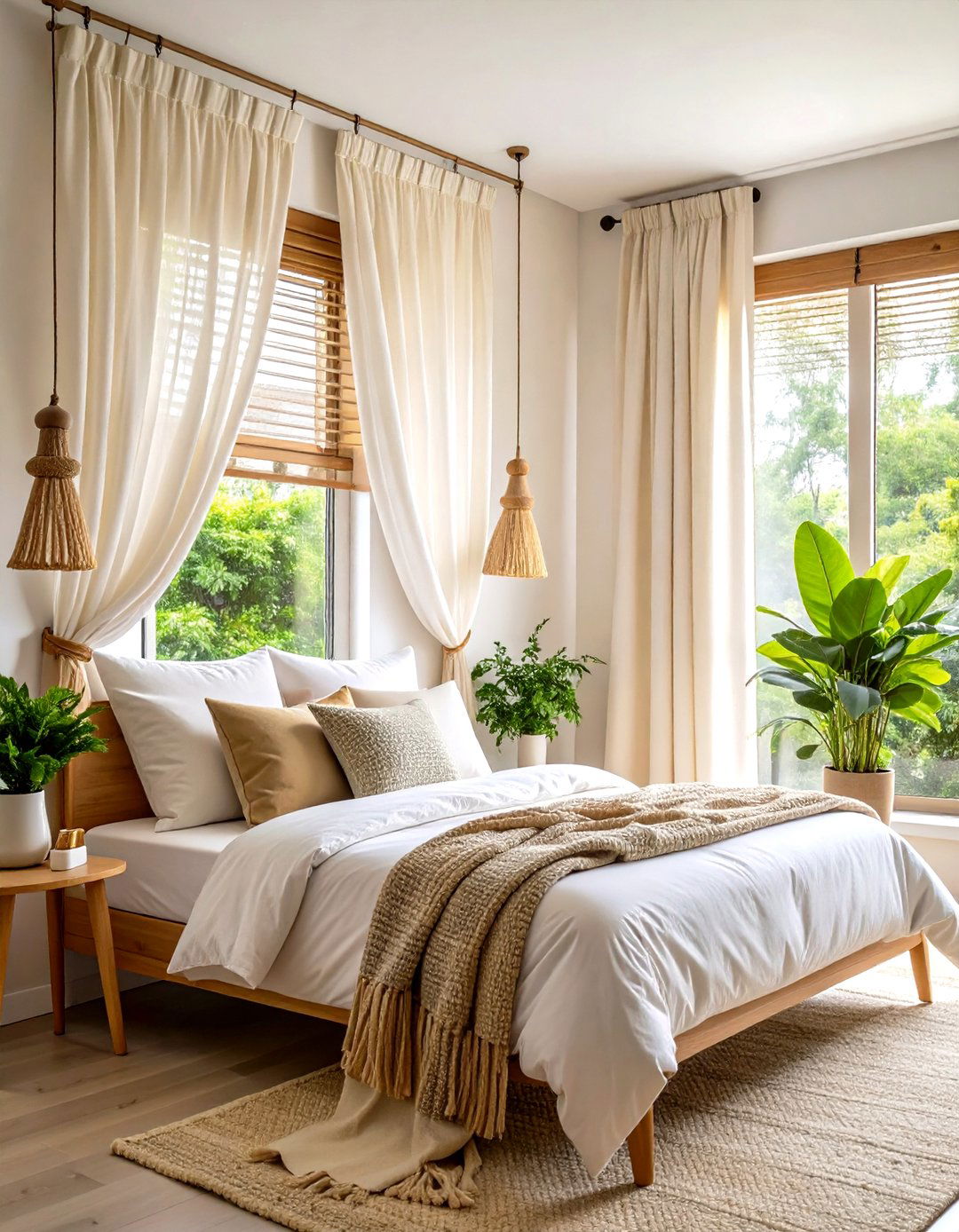
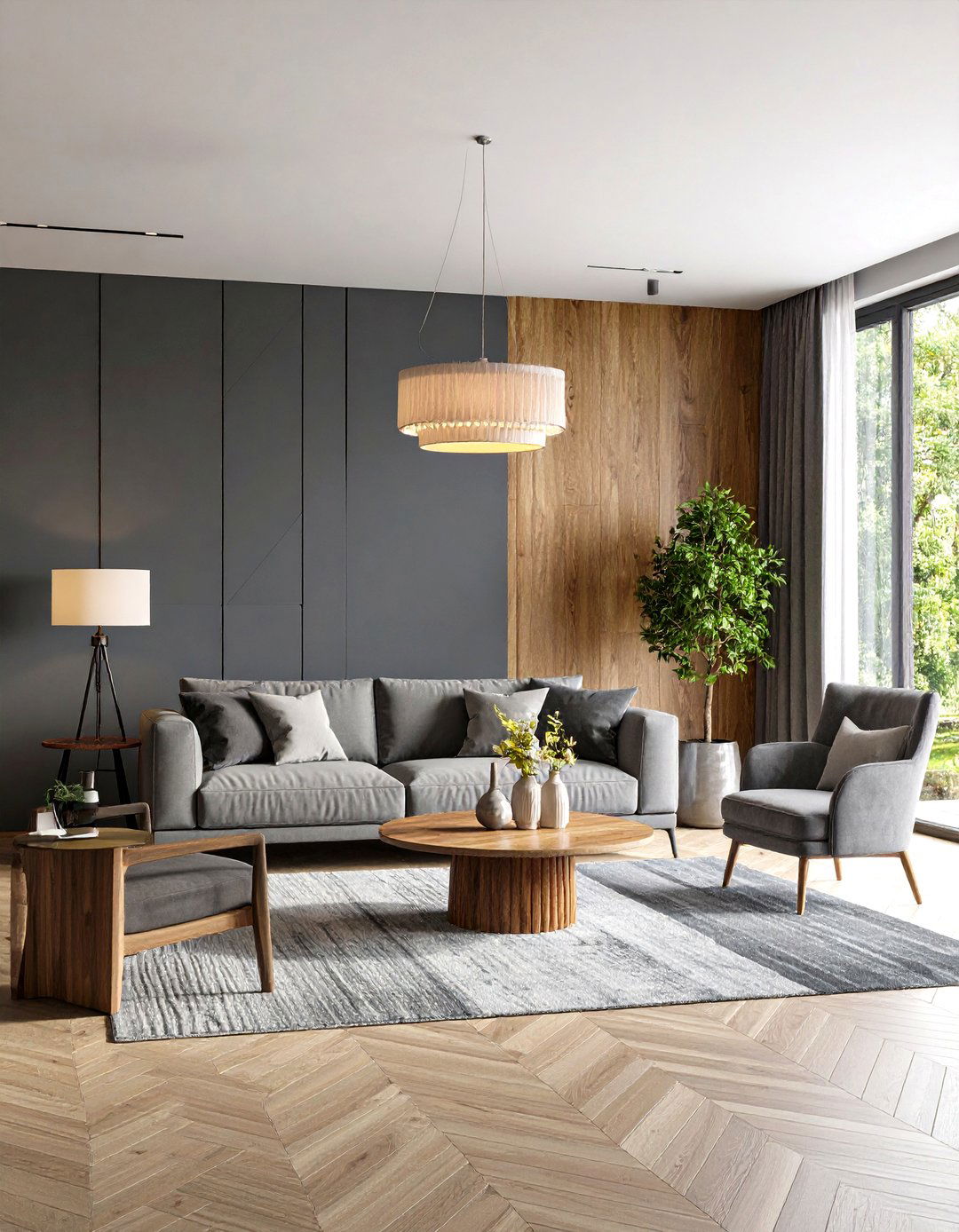
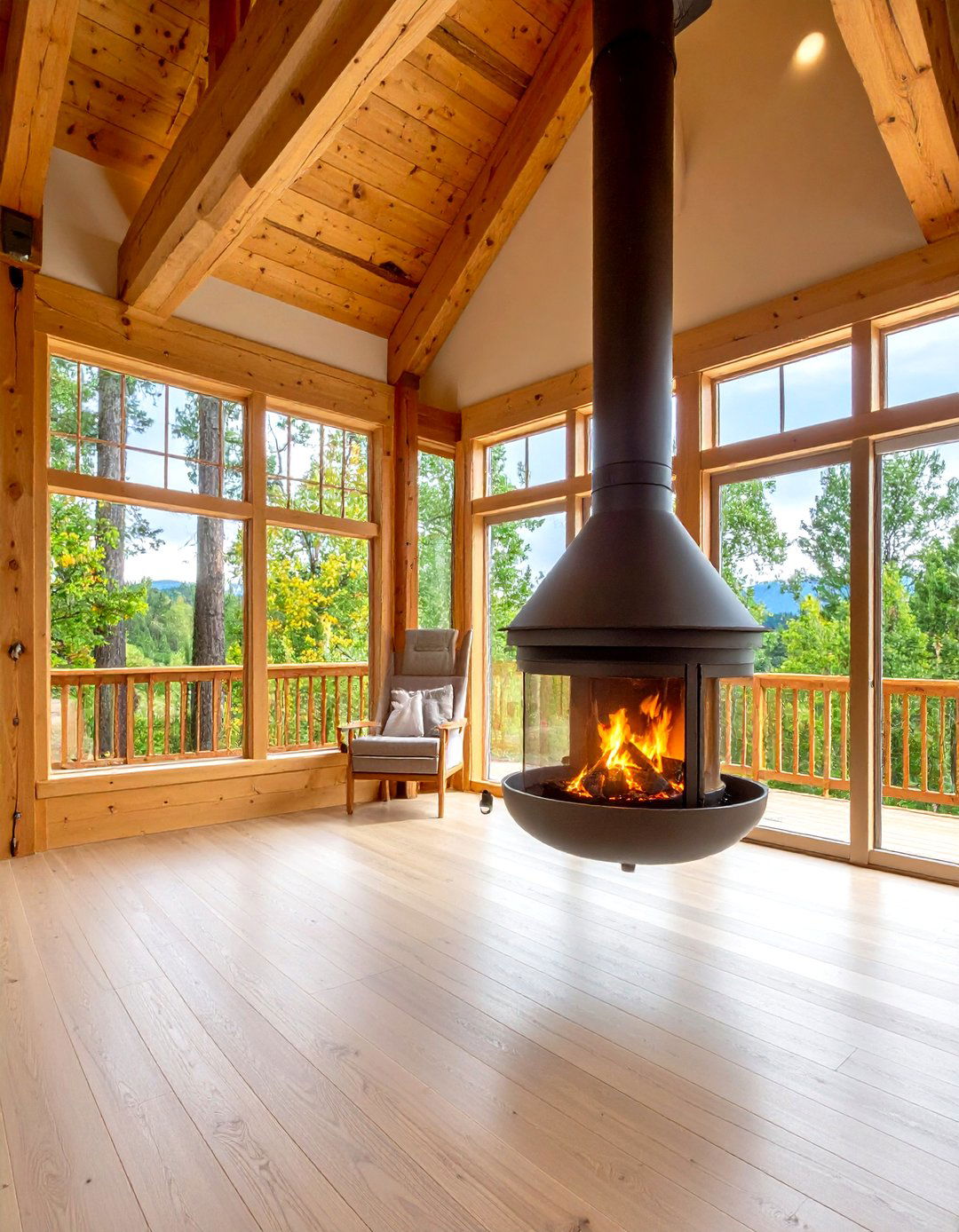
Leave a Reply